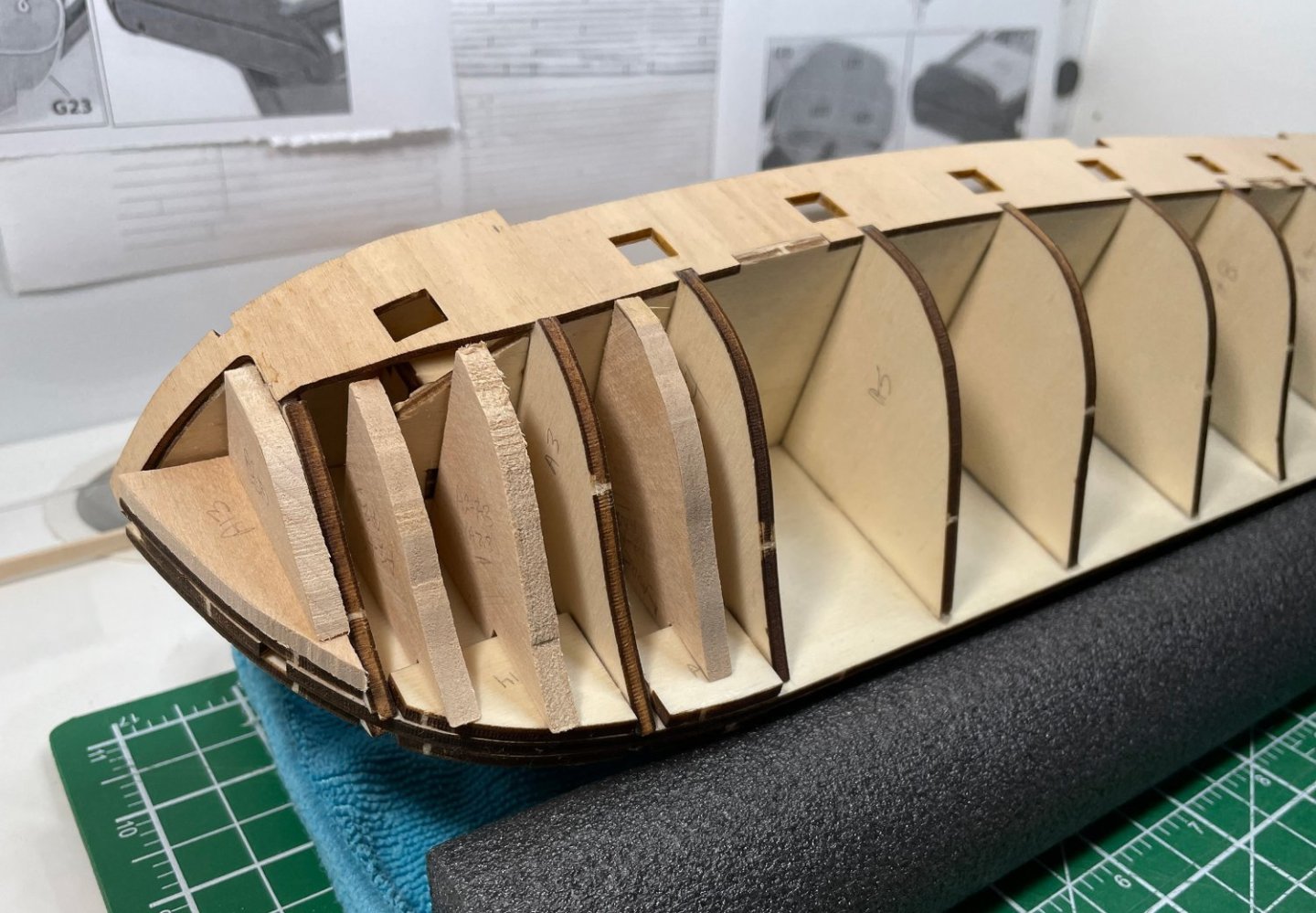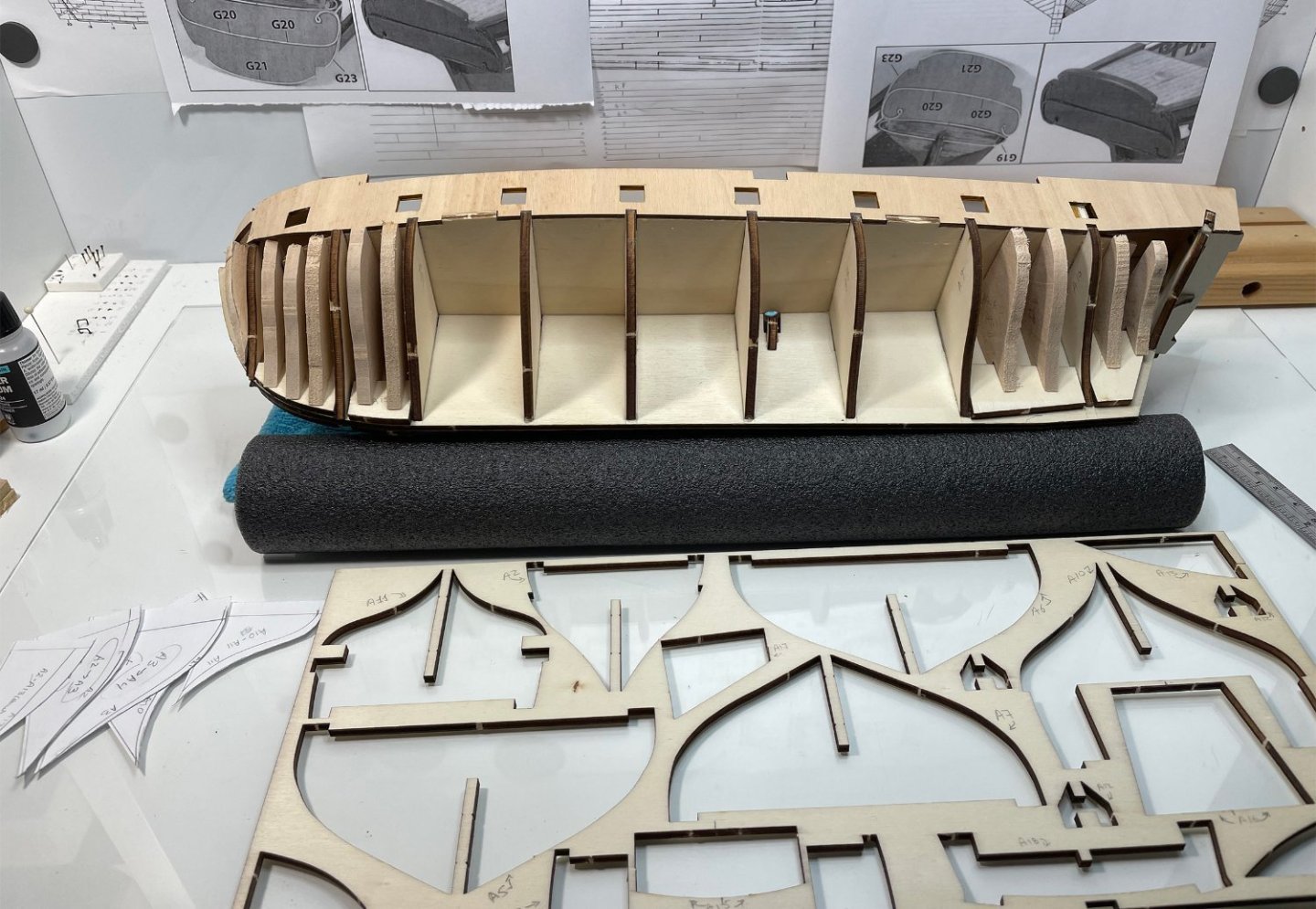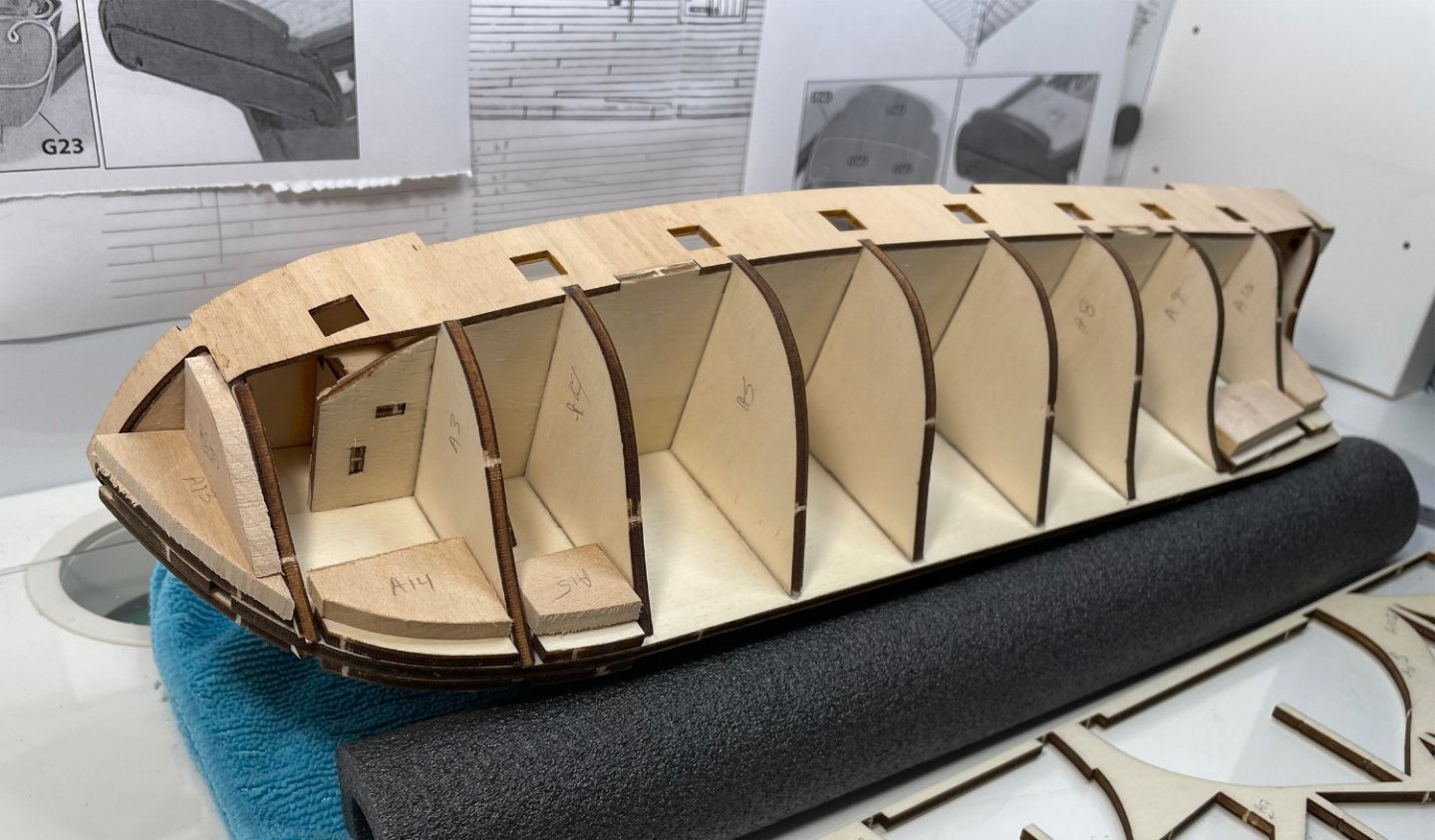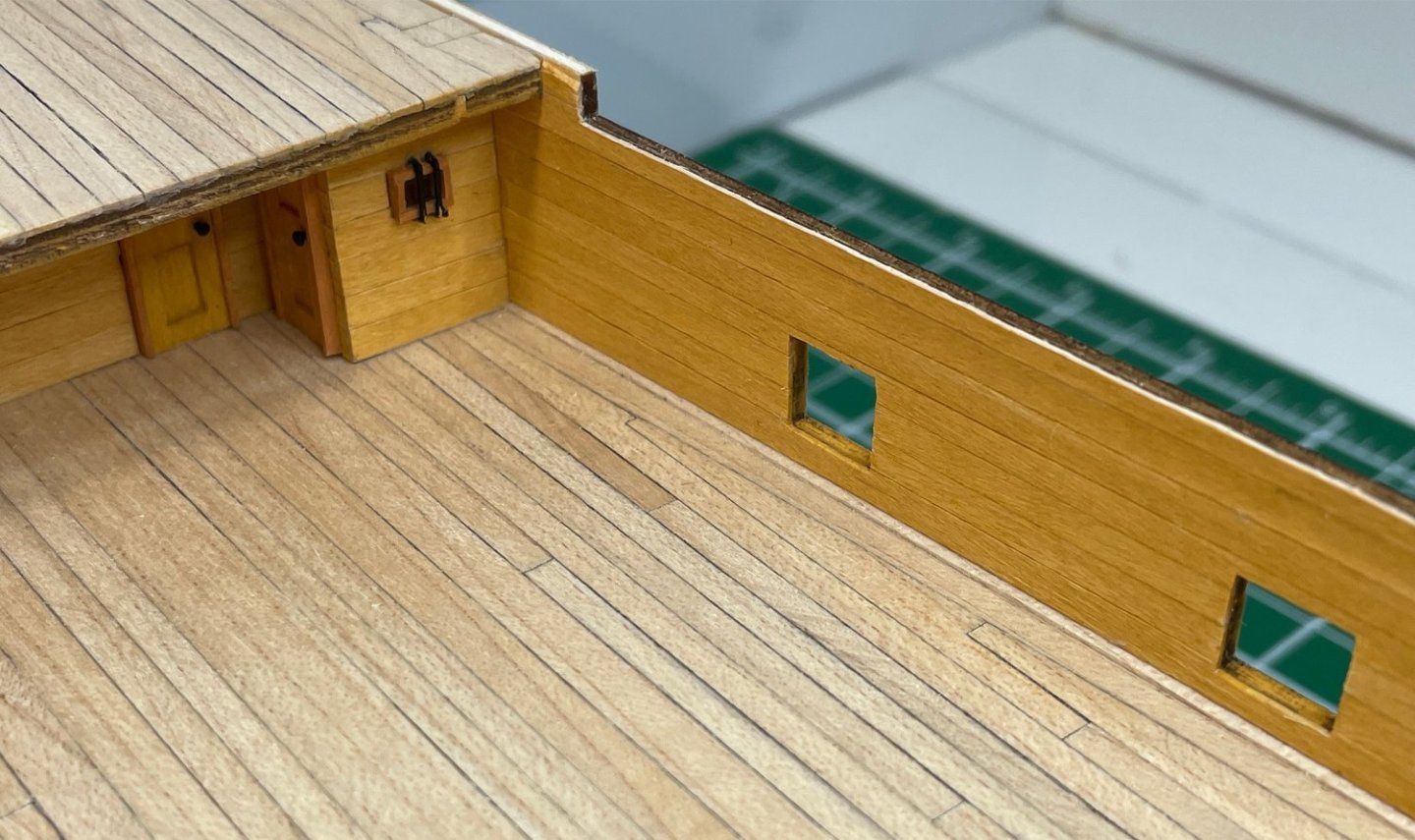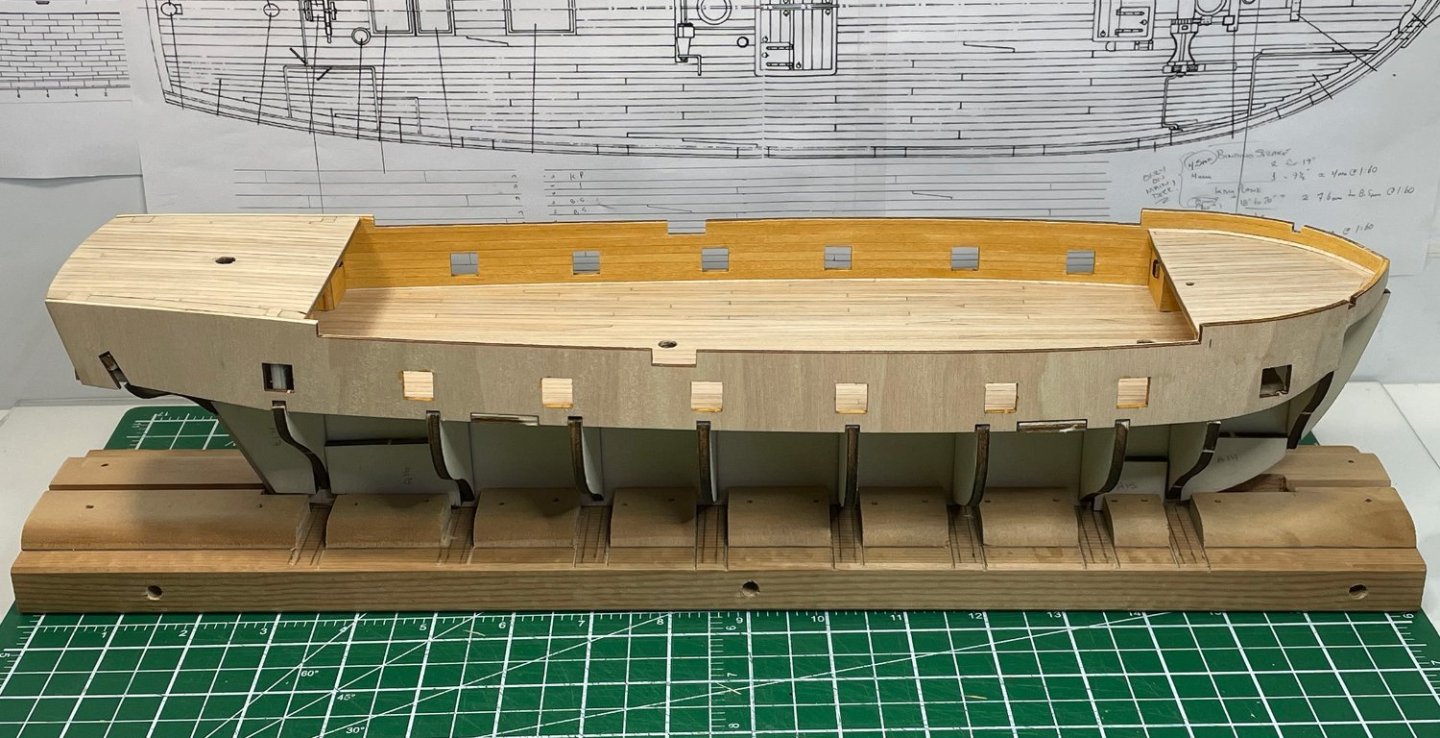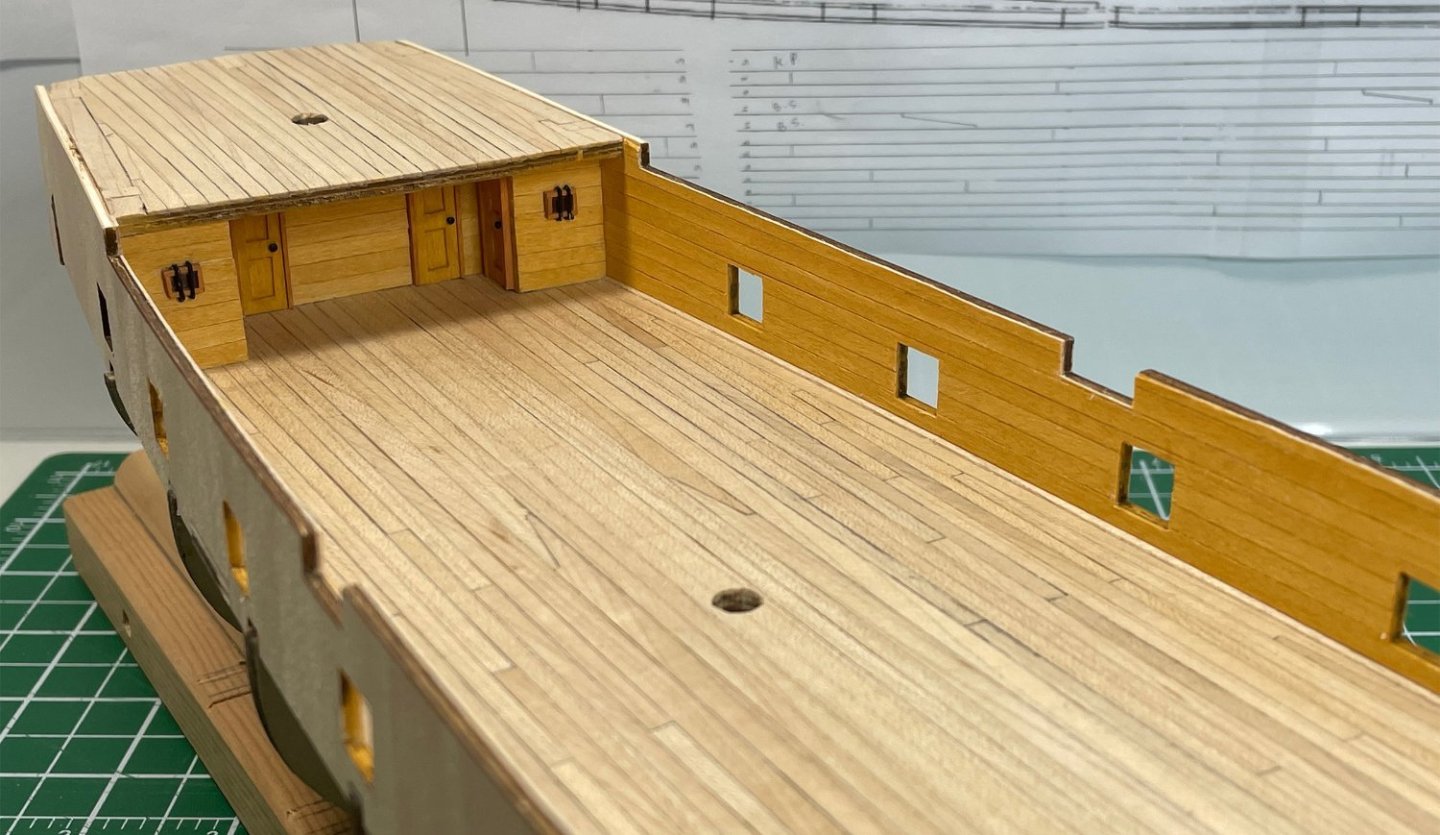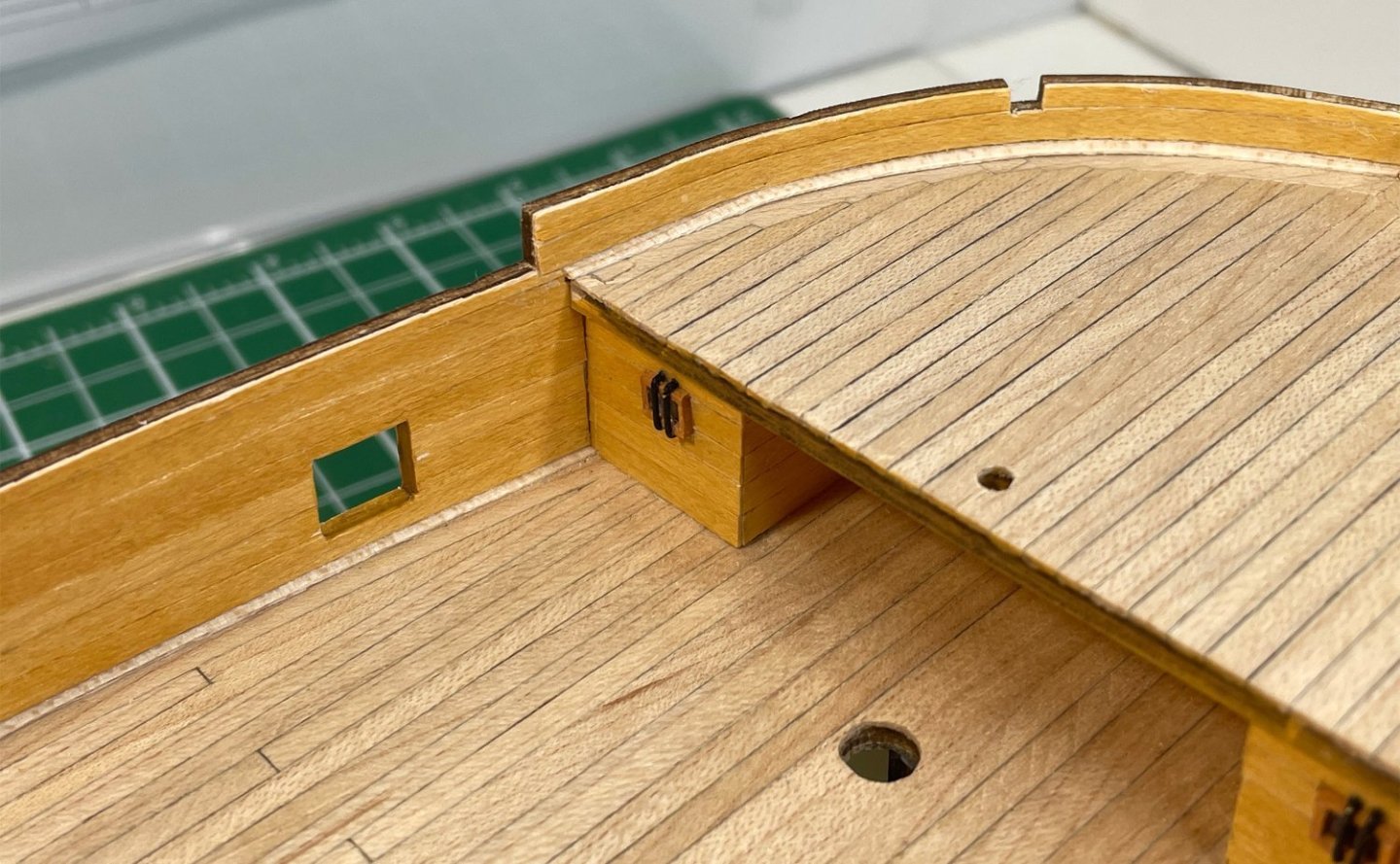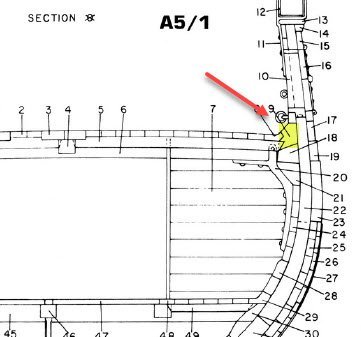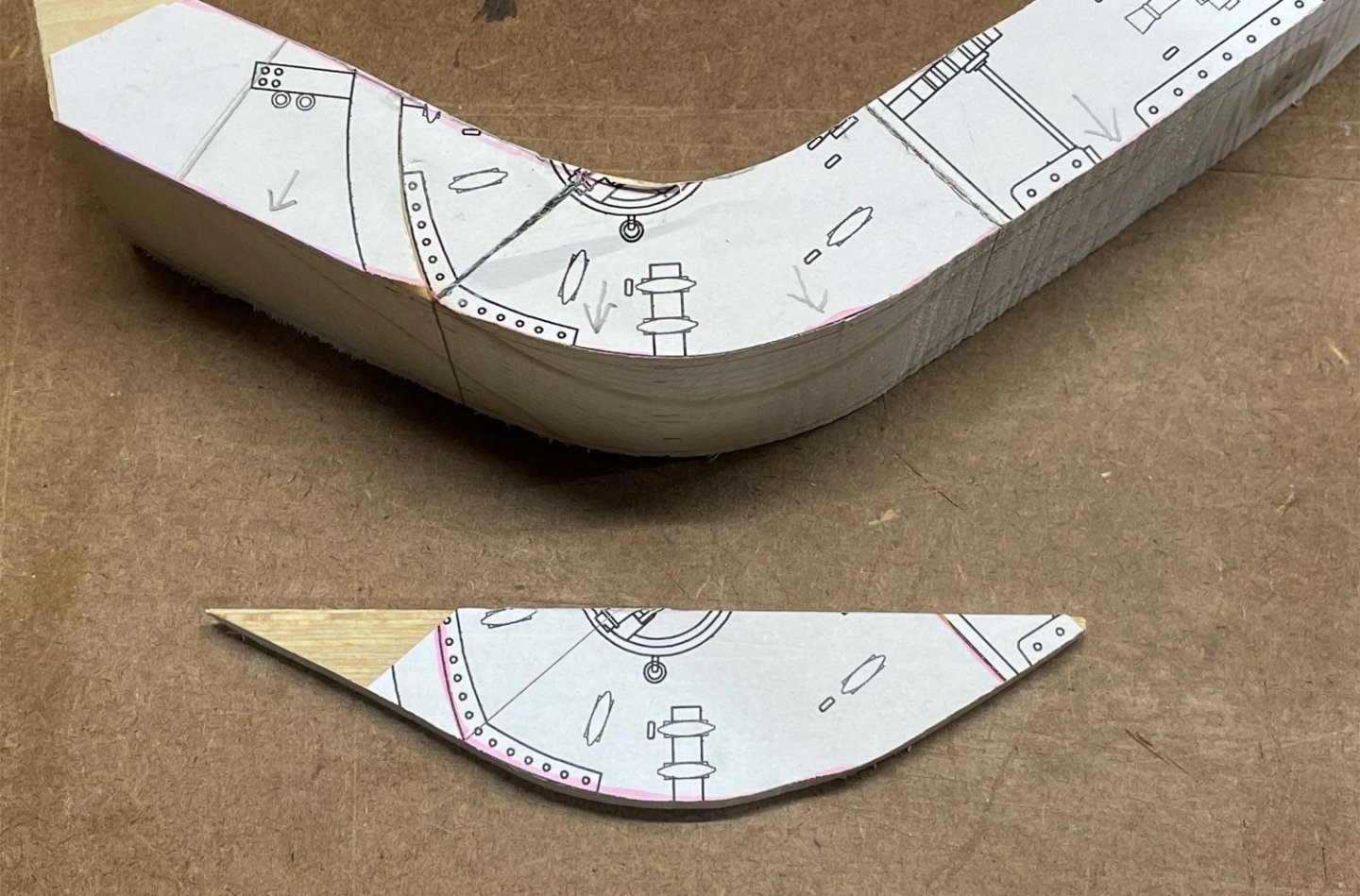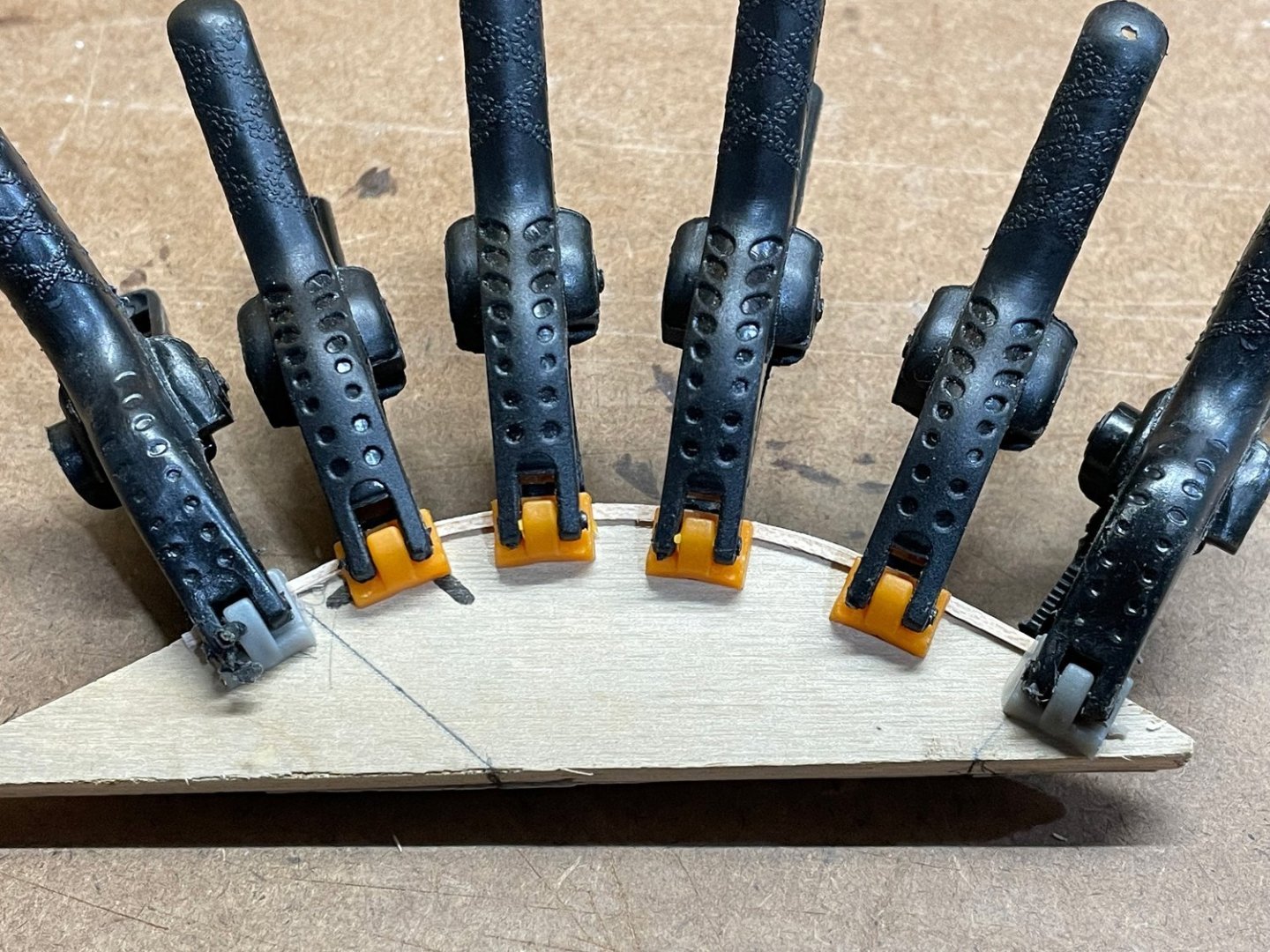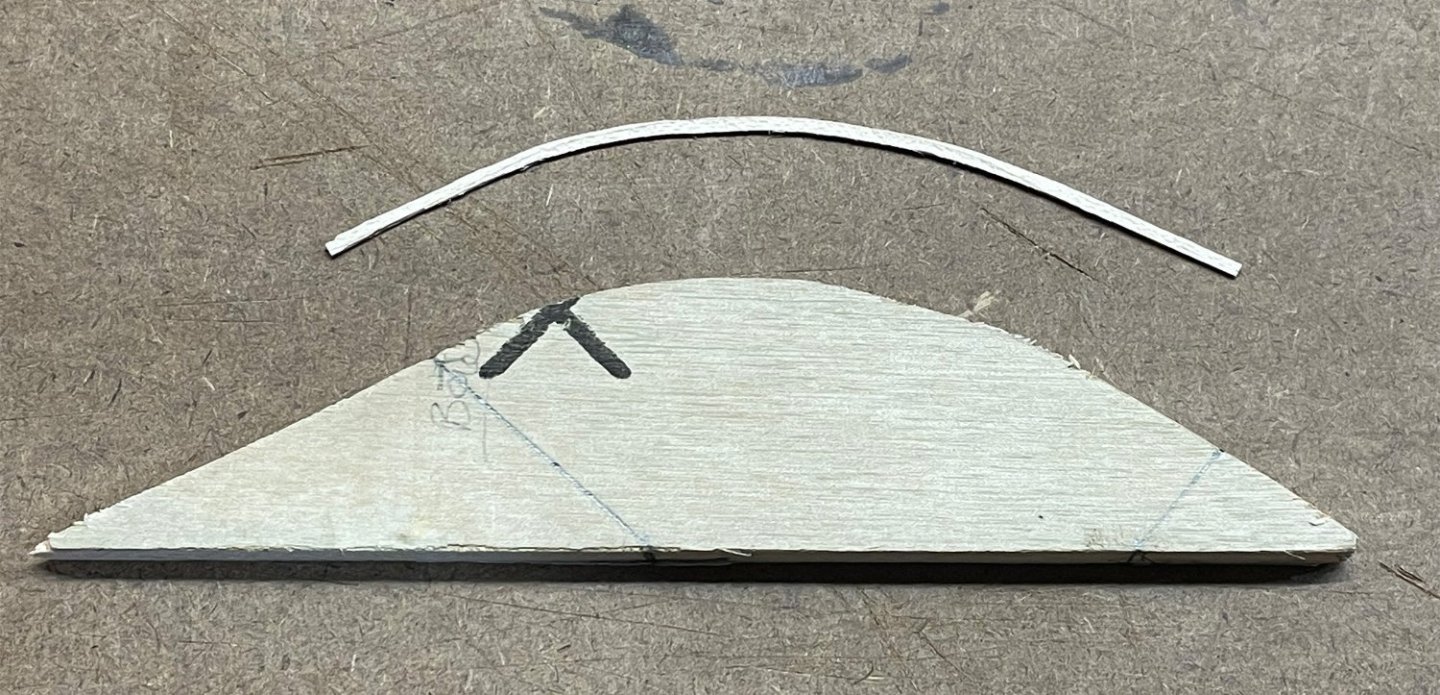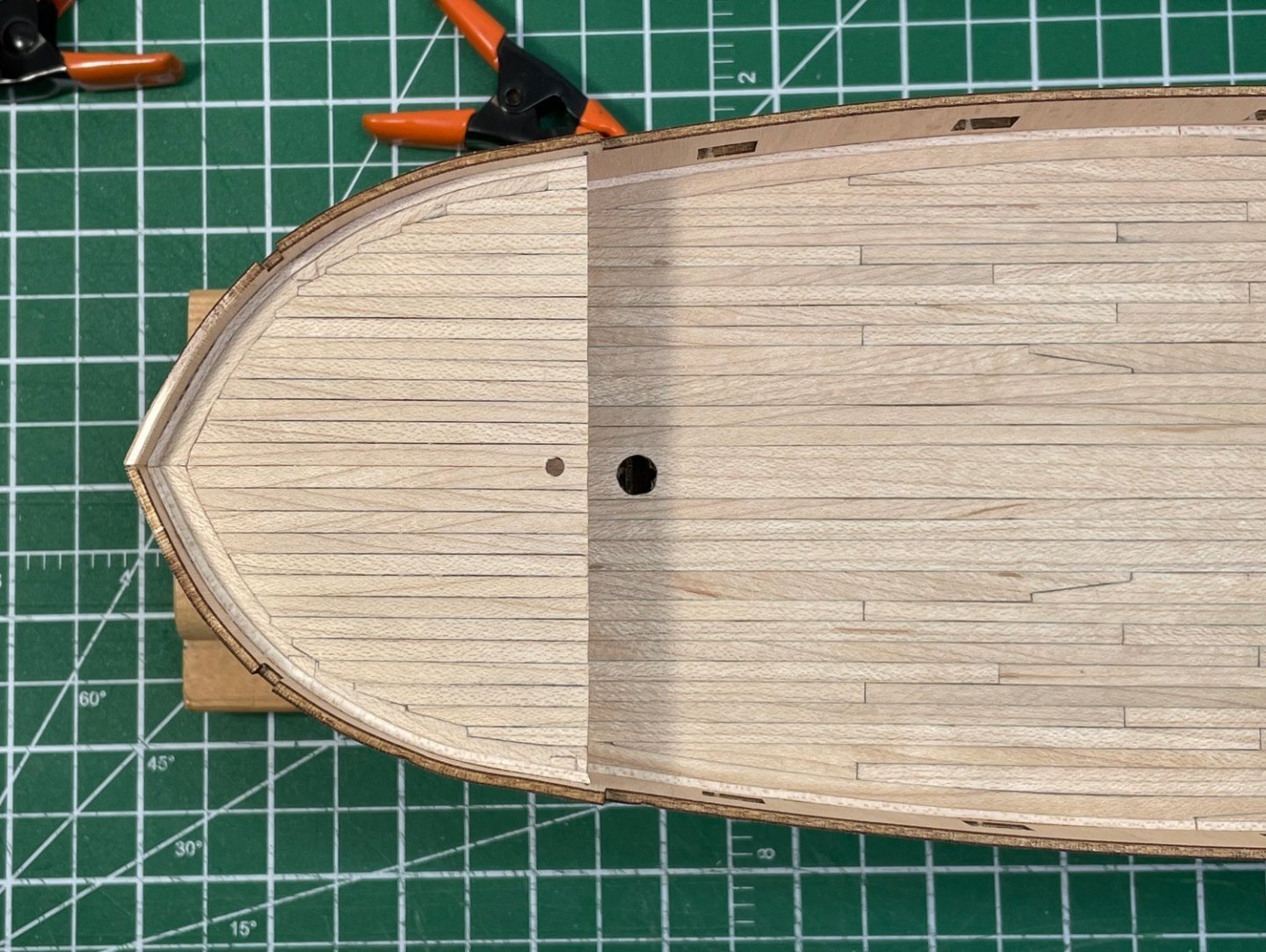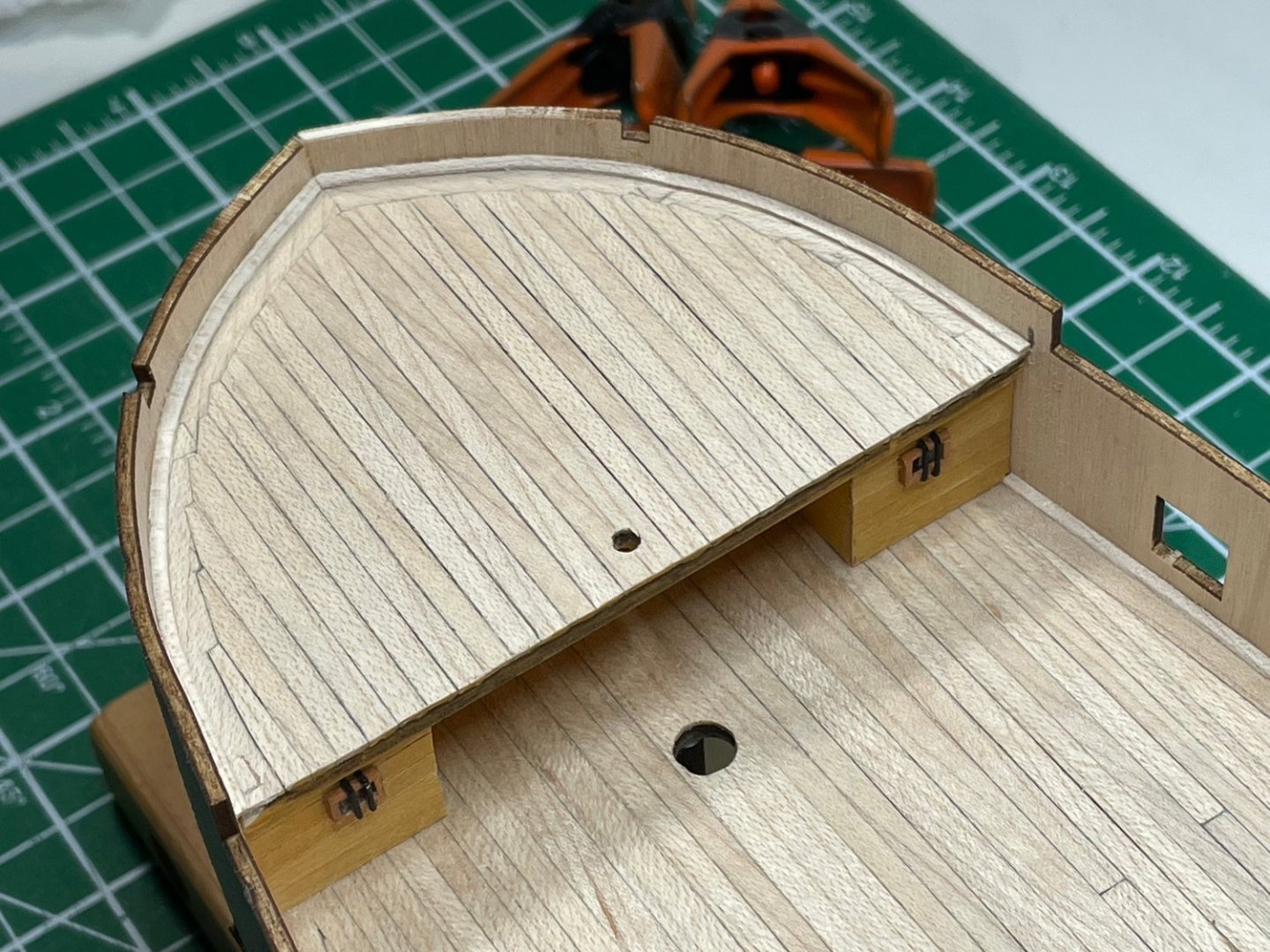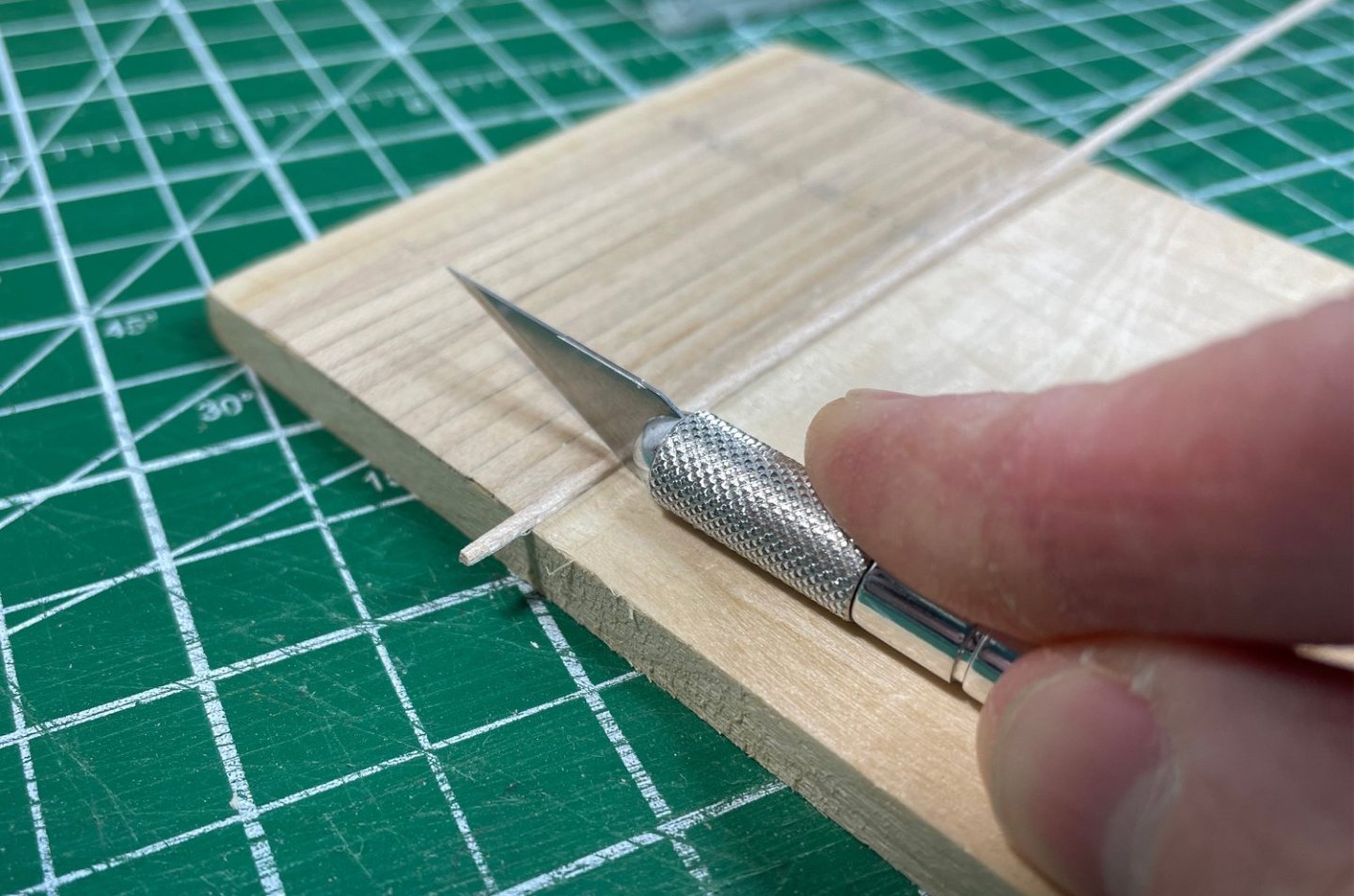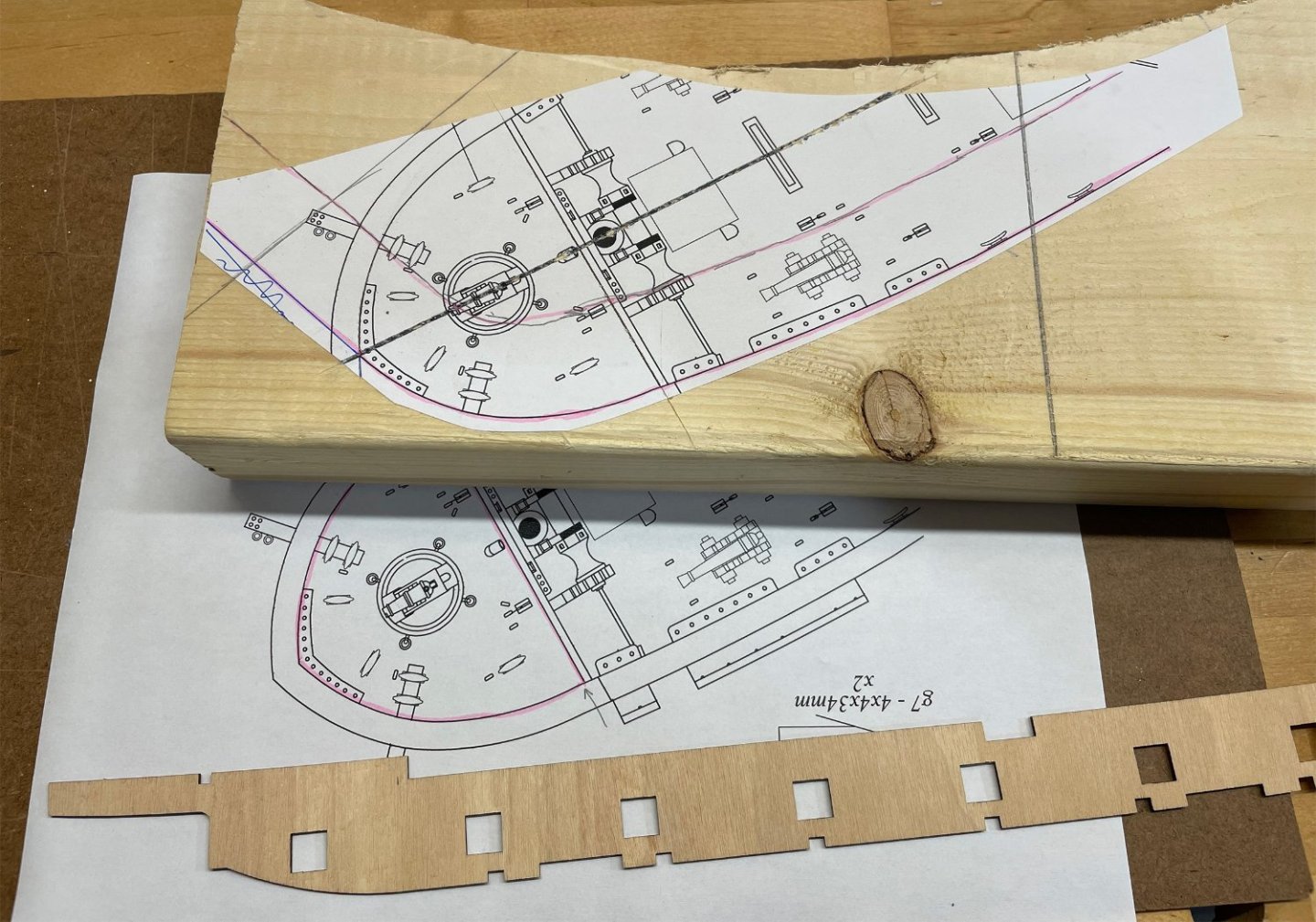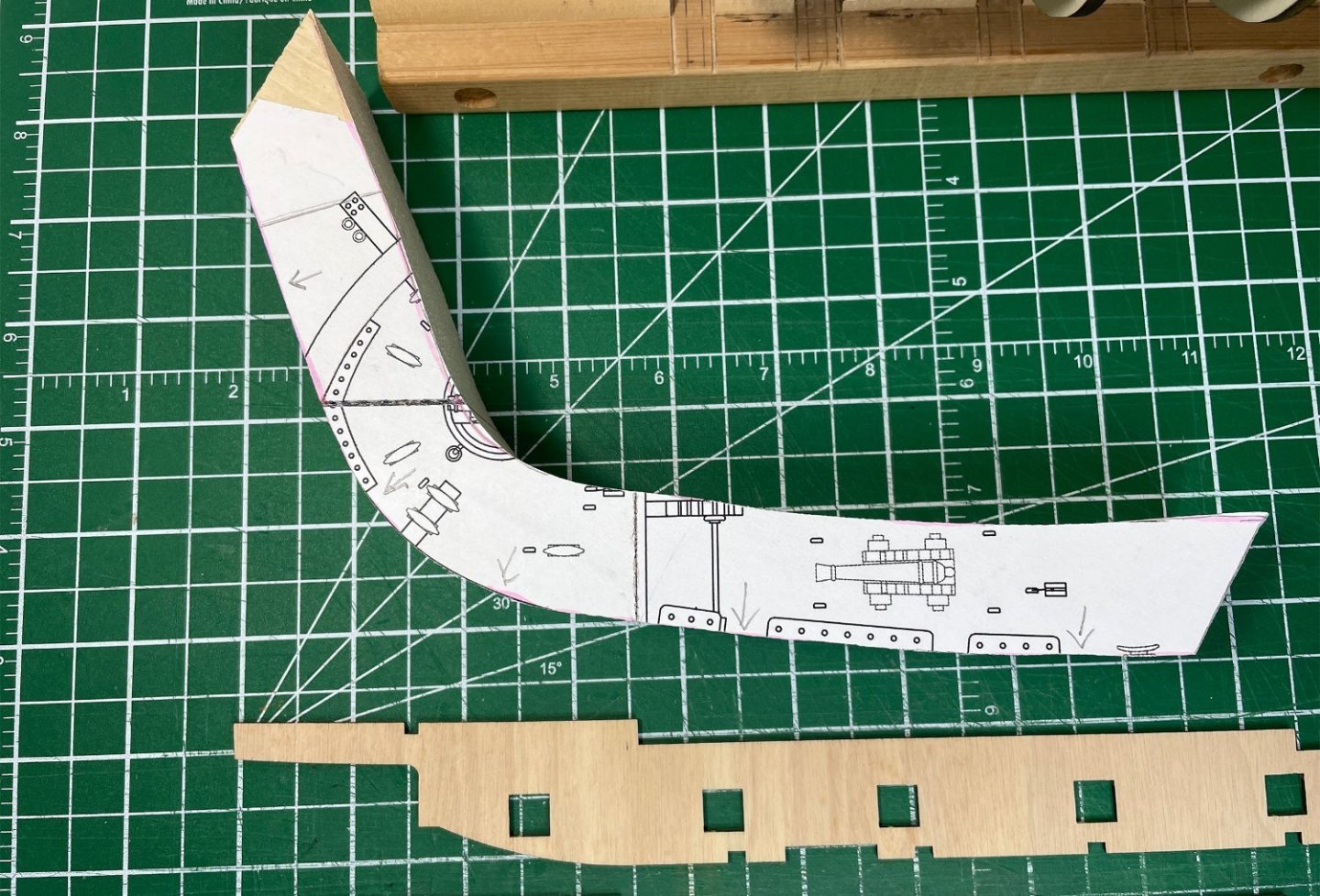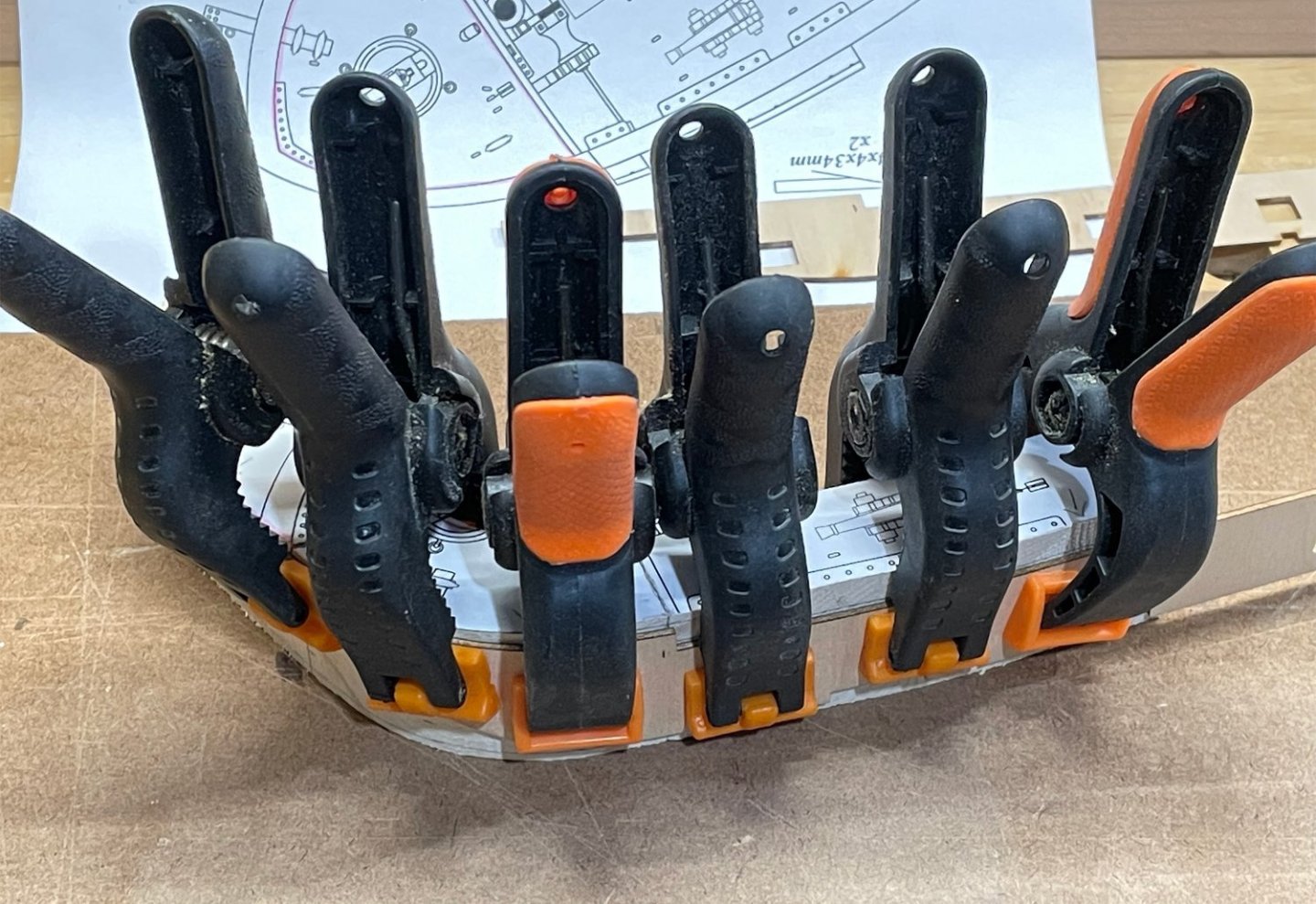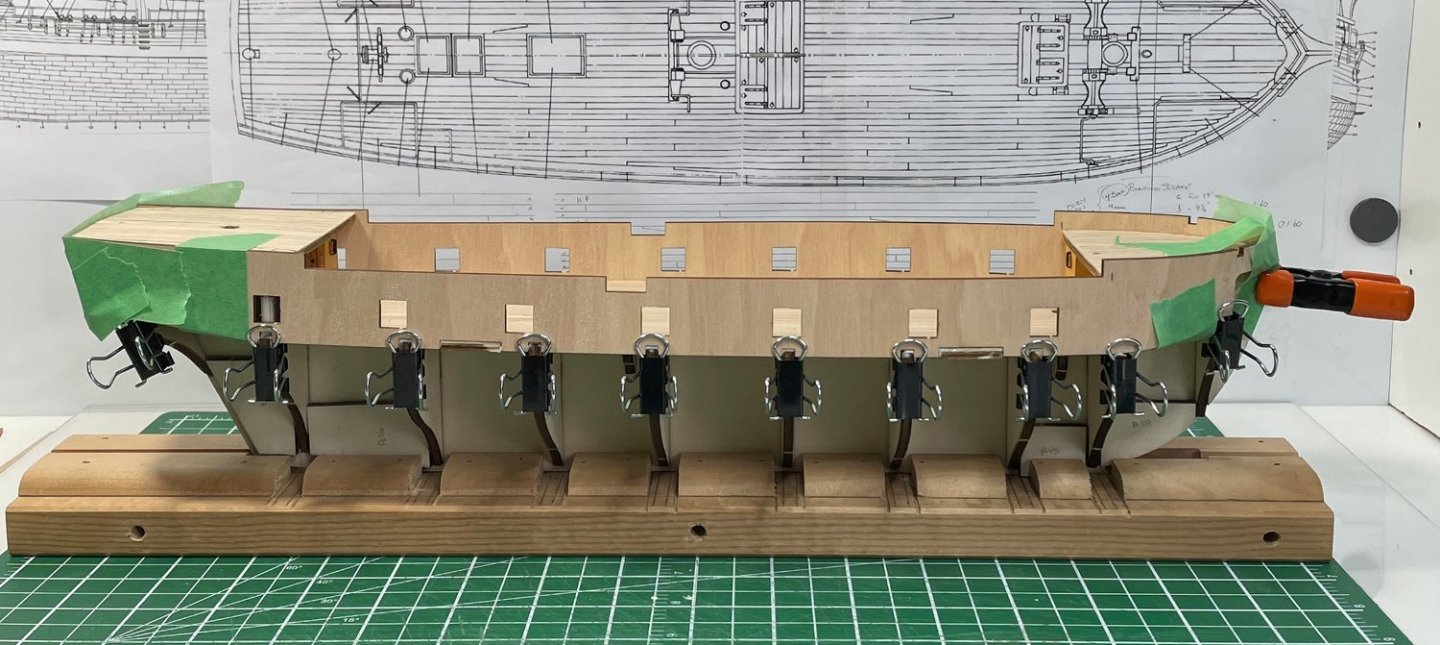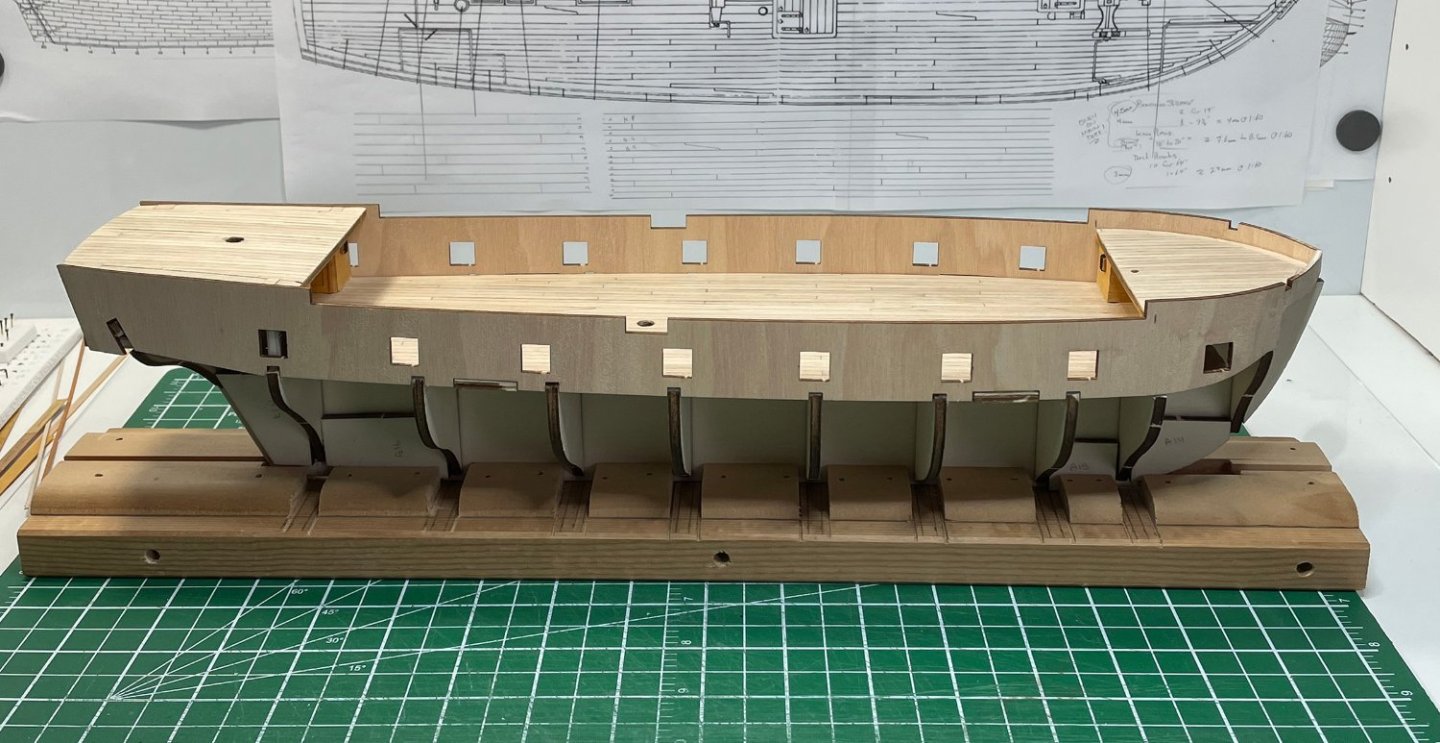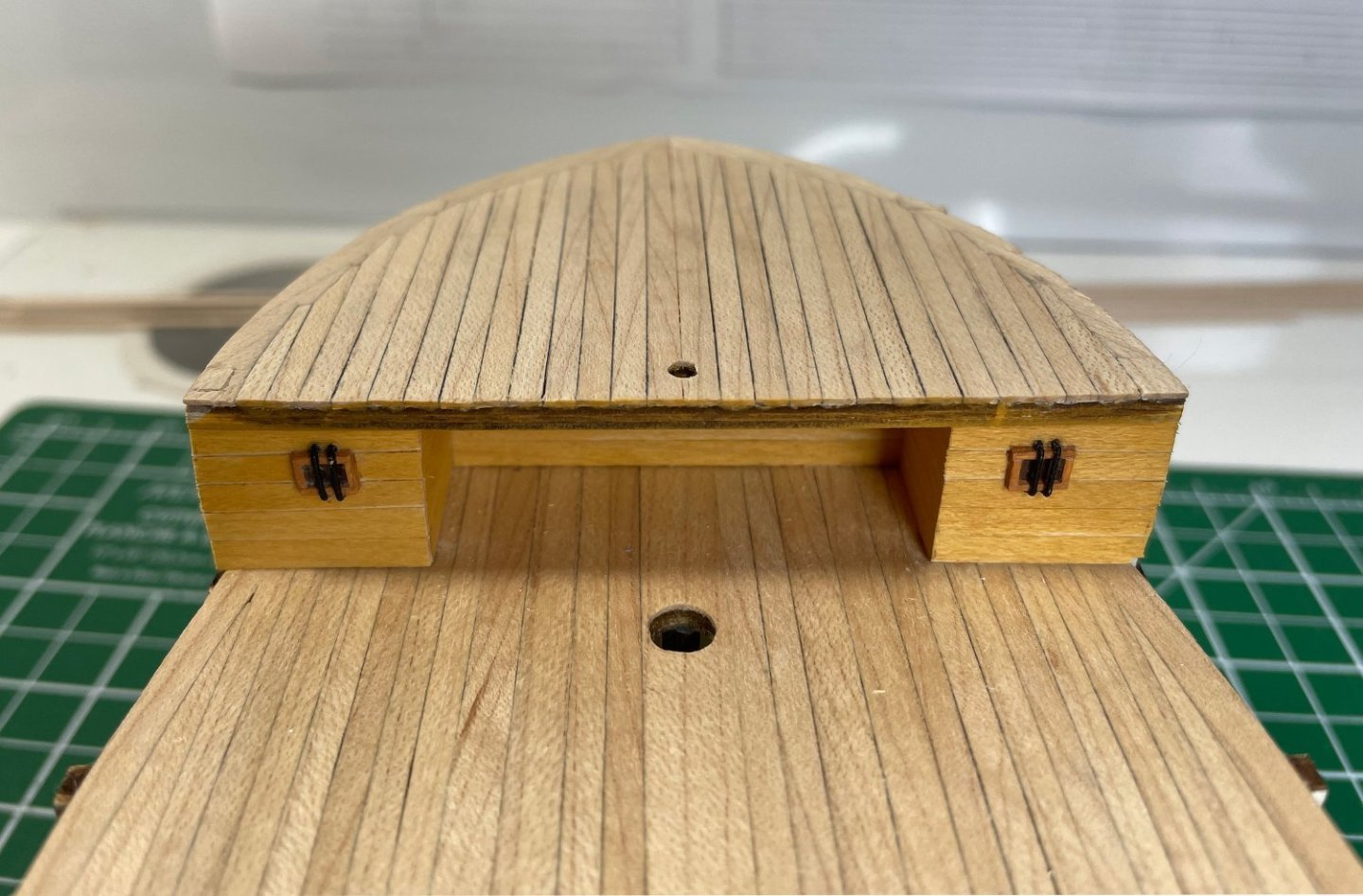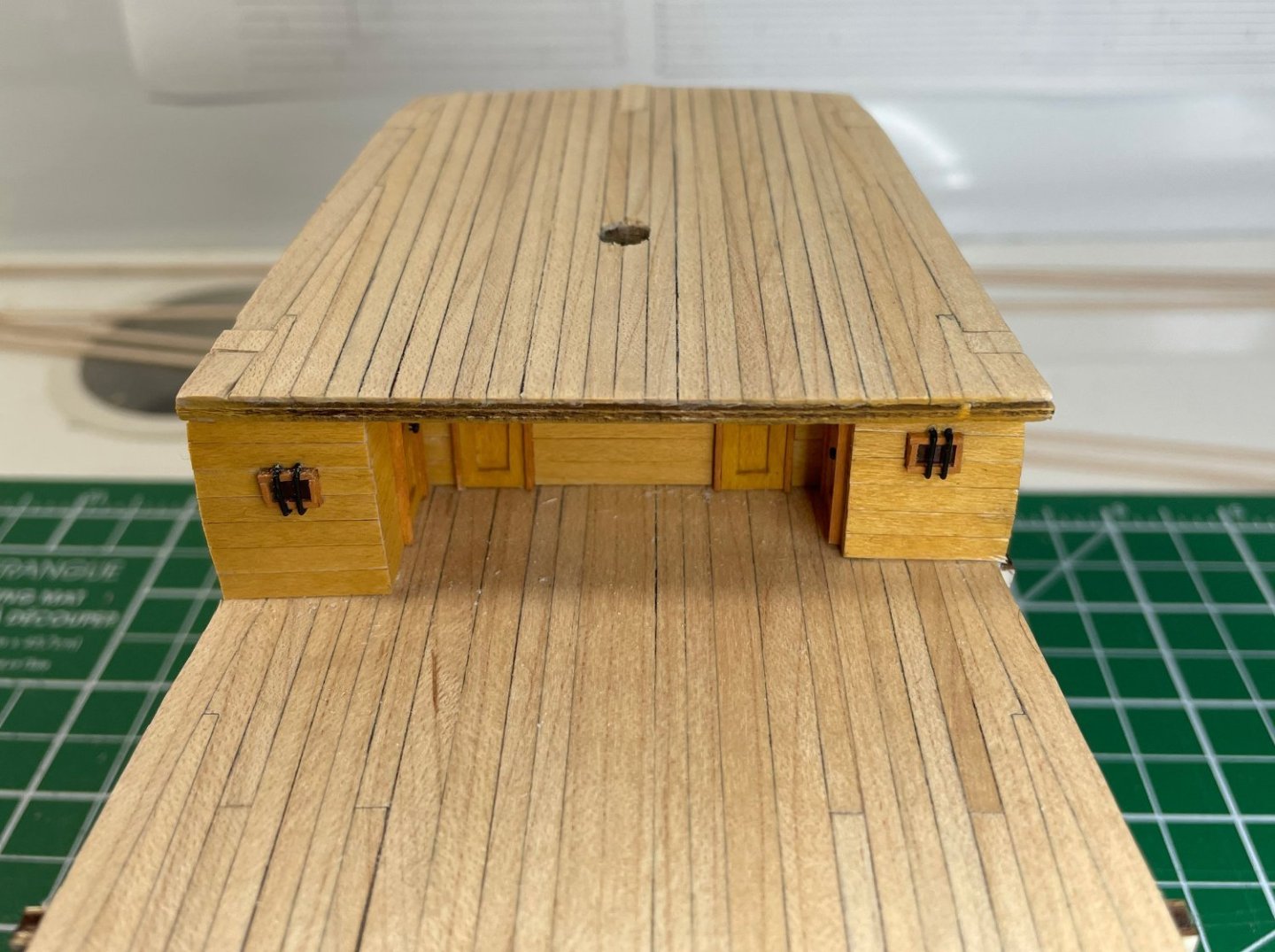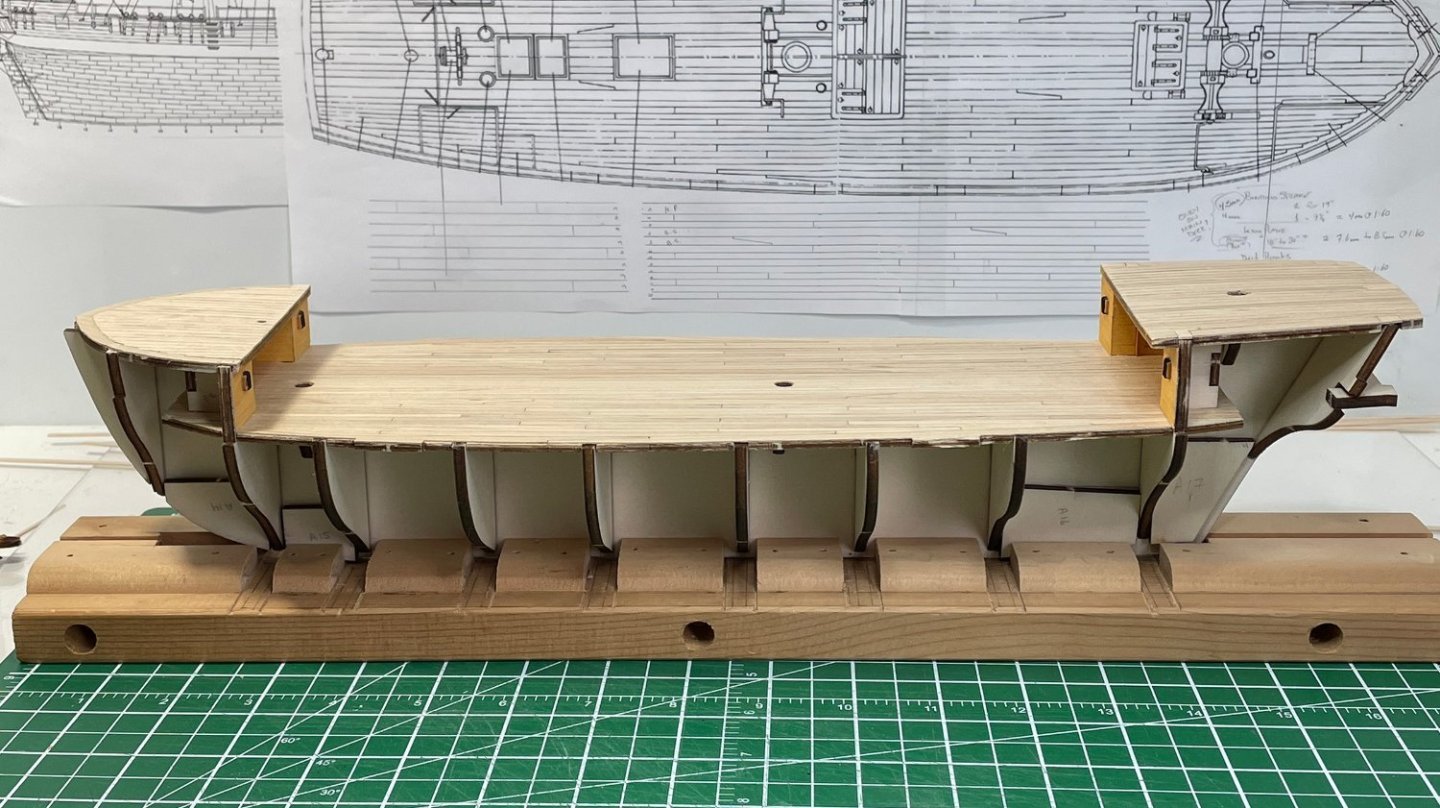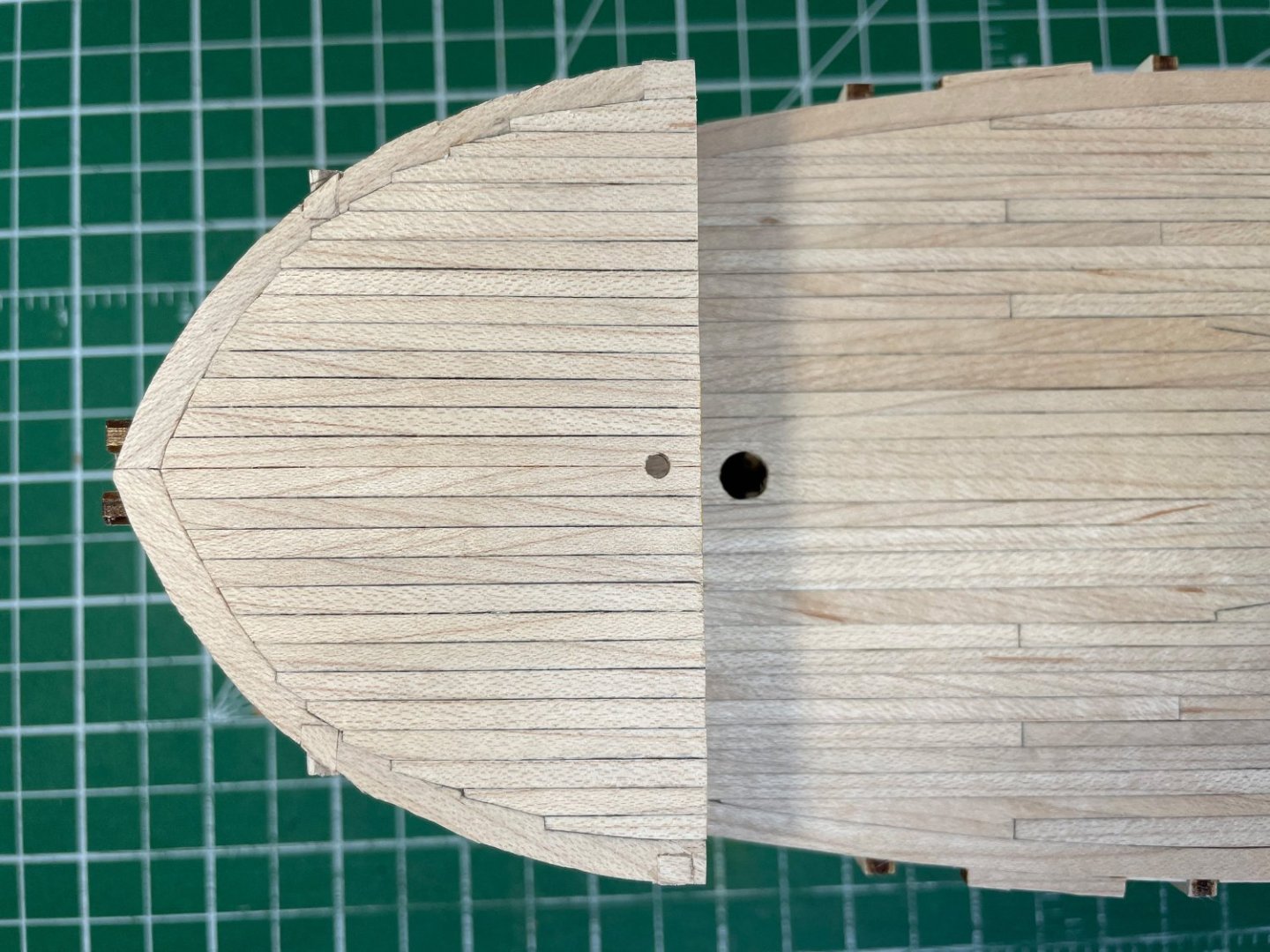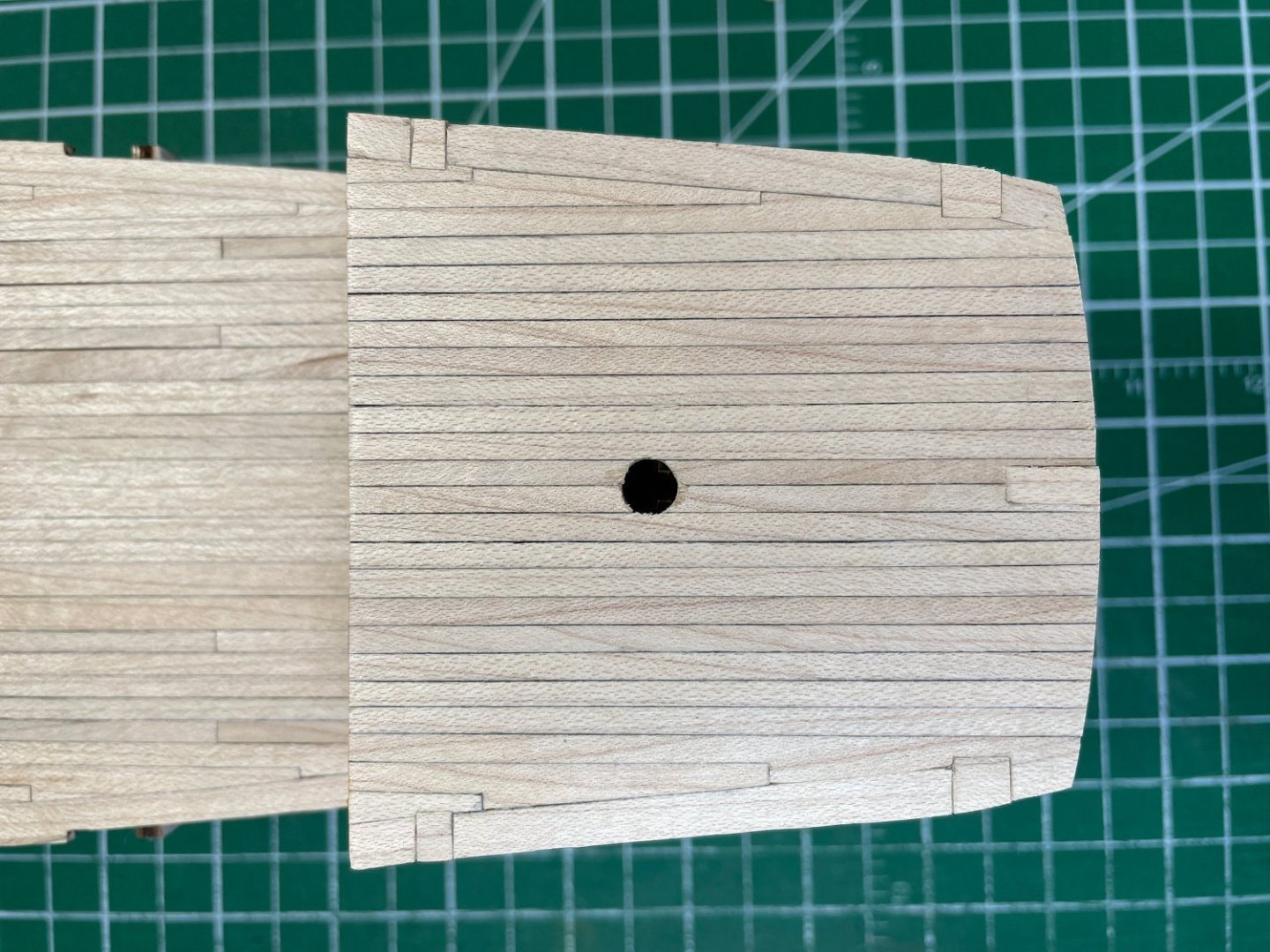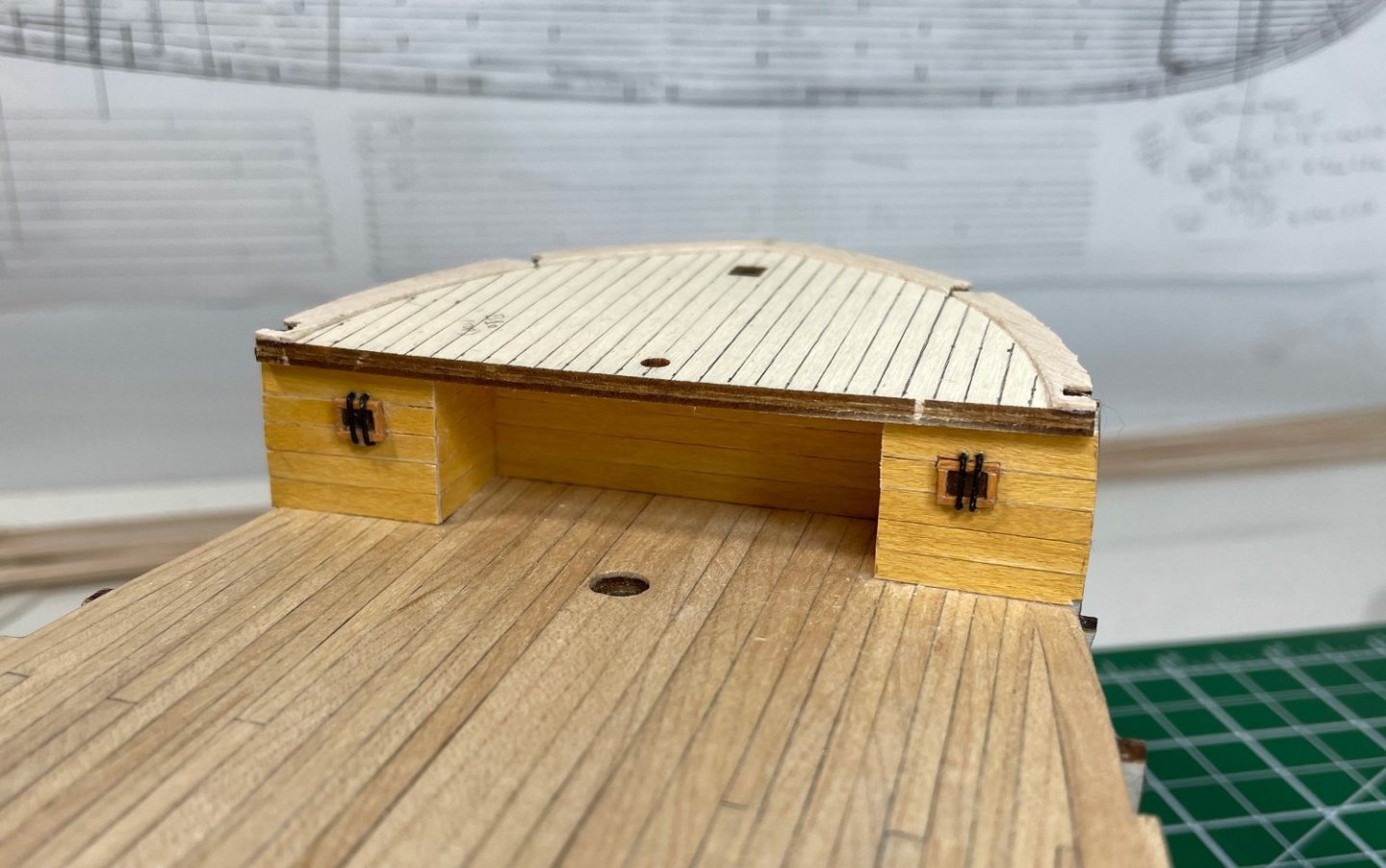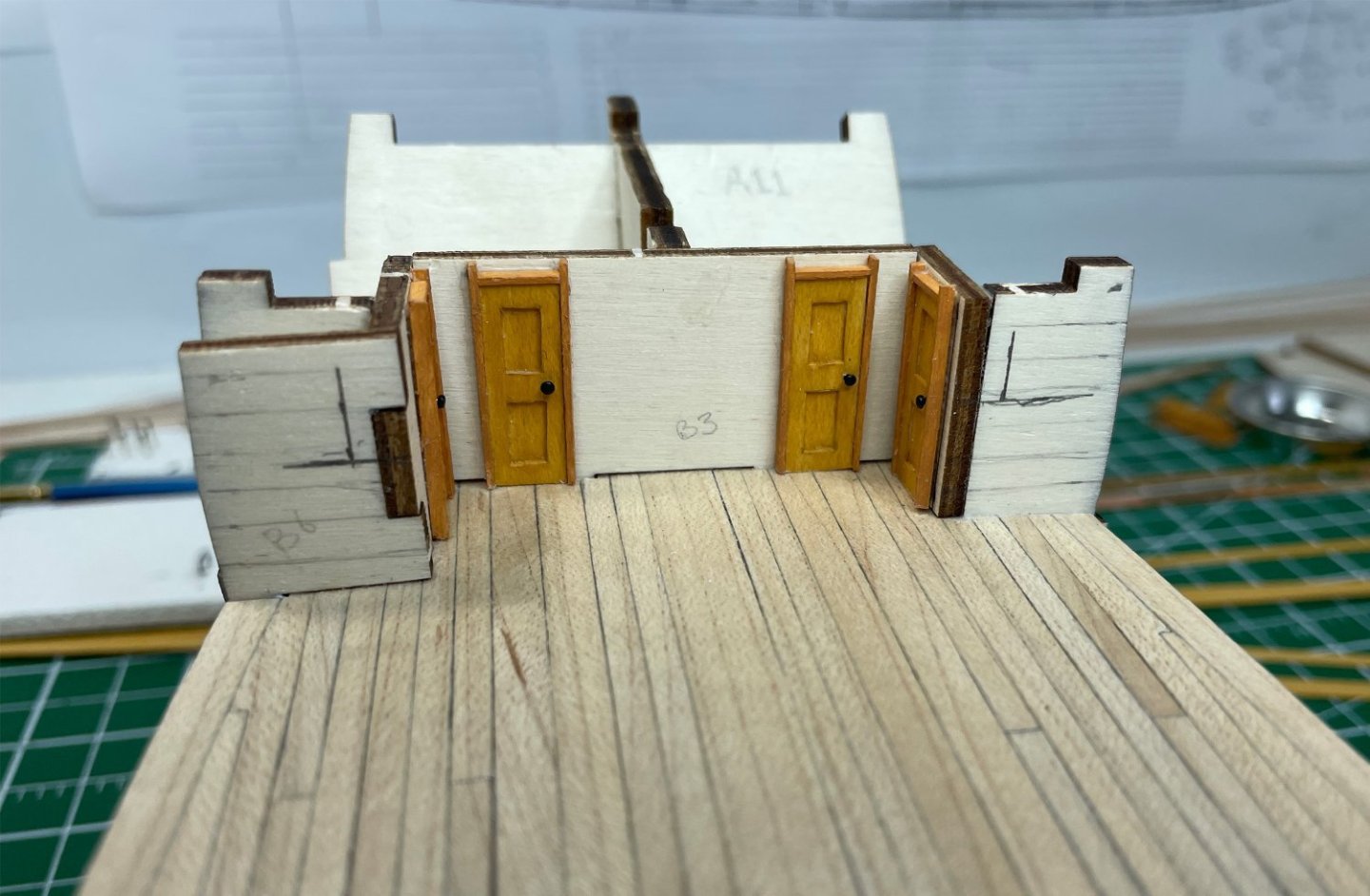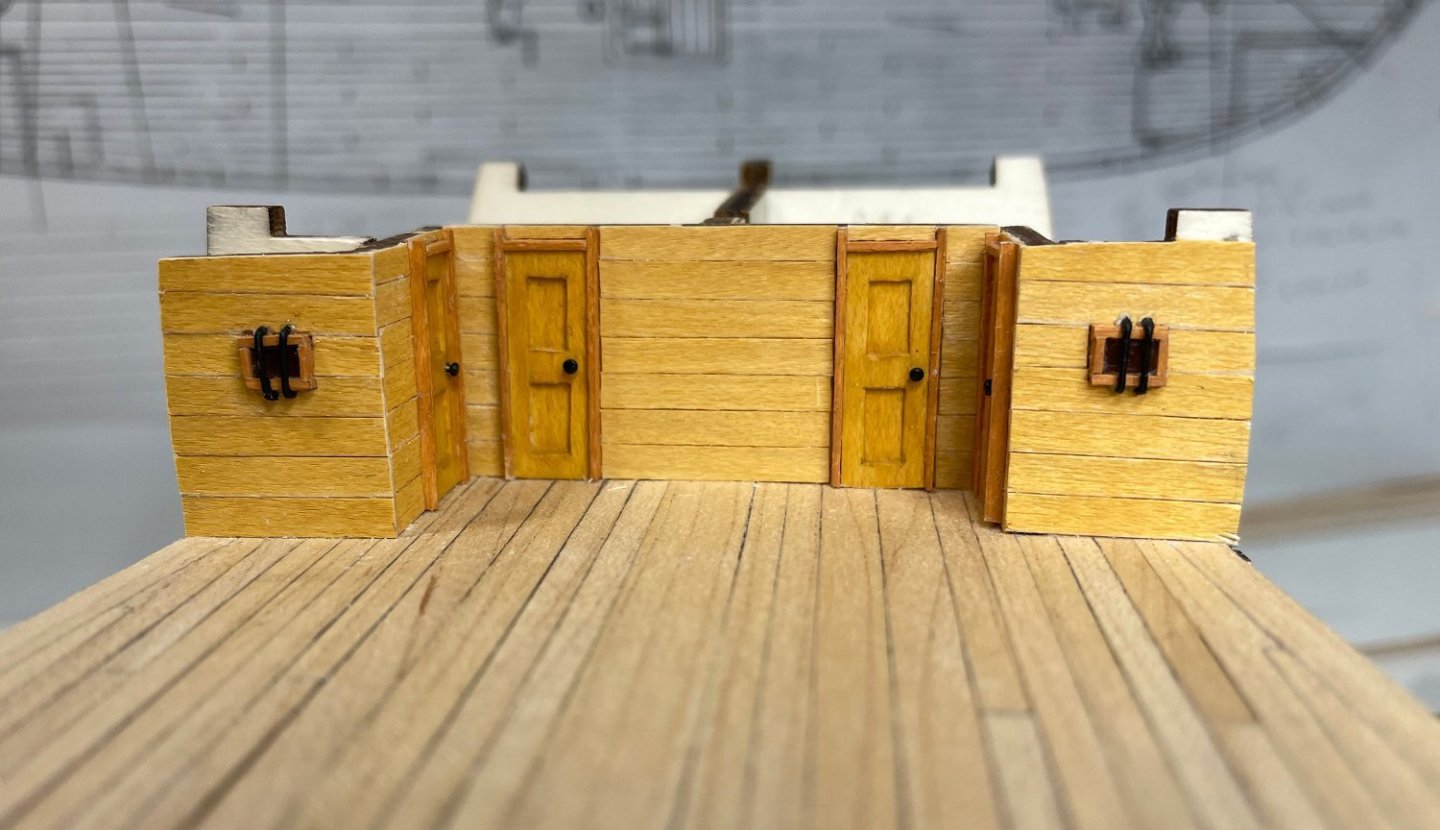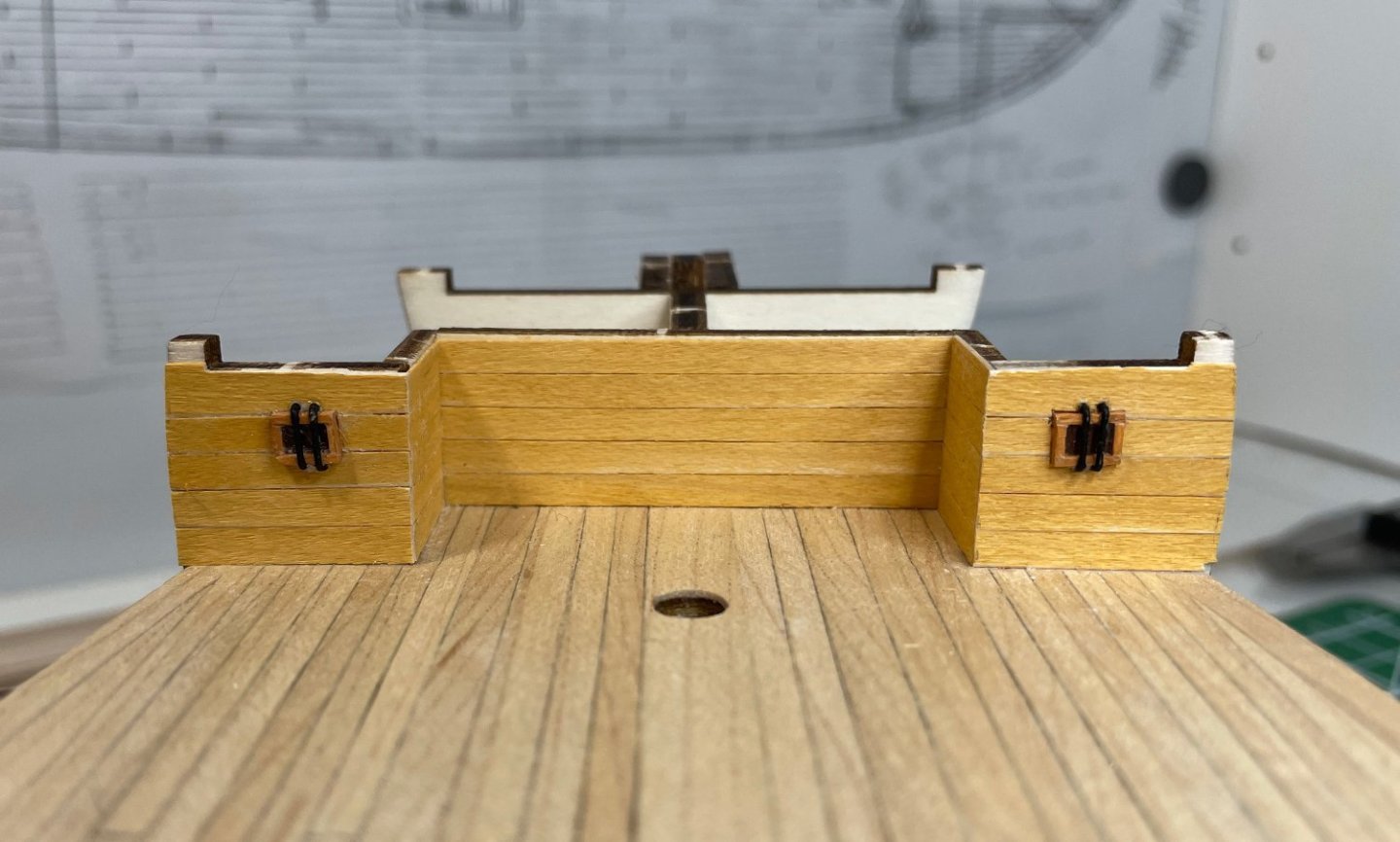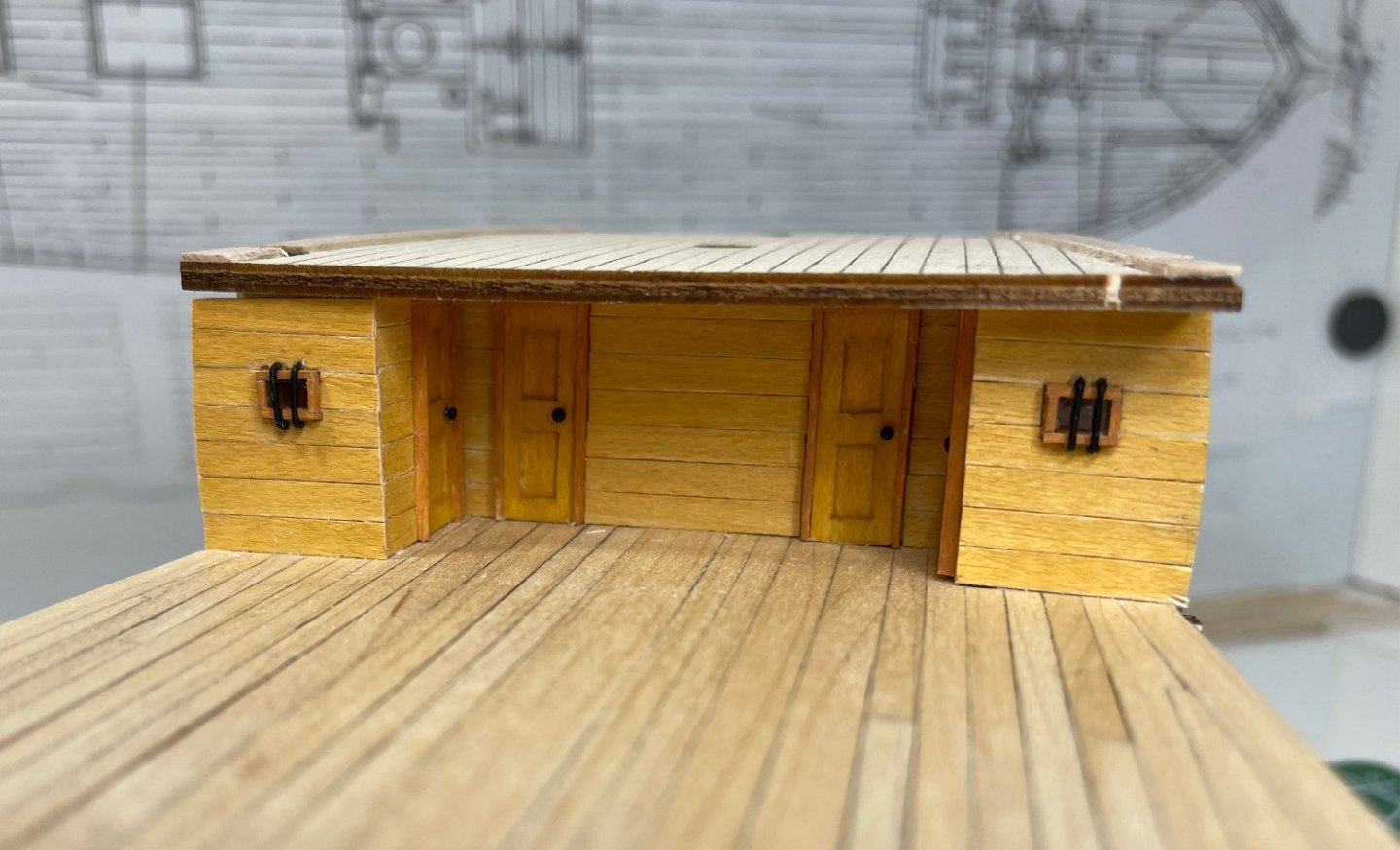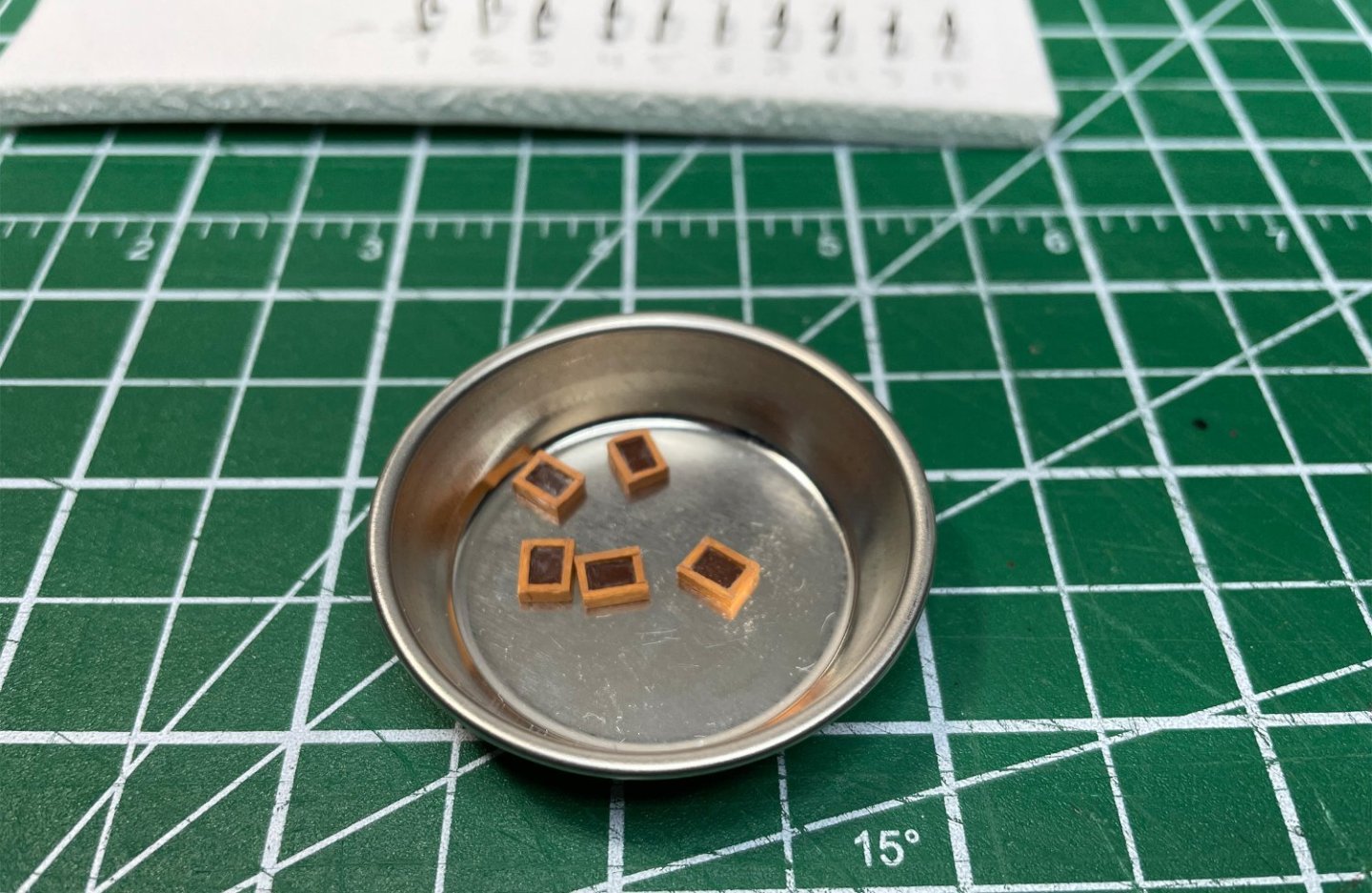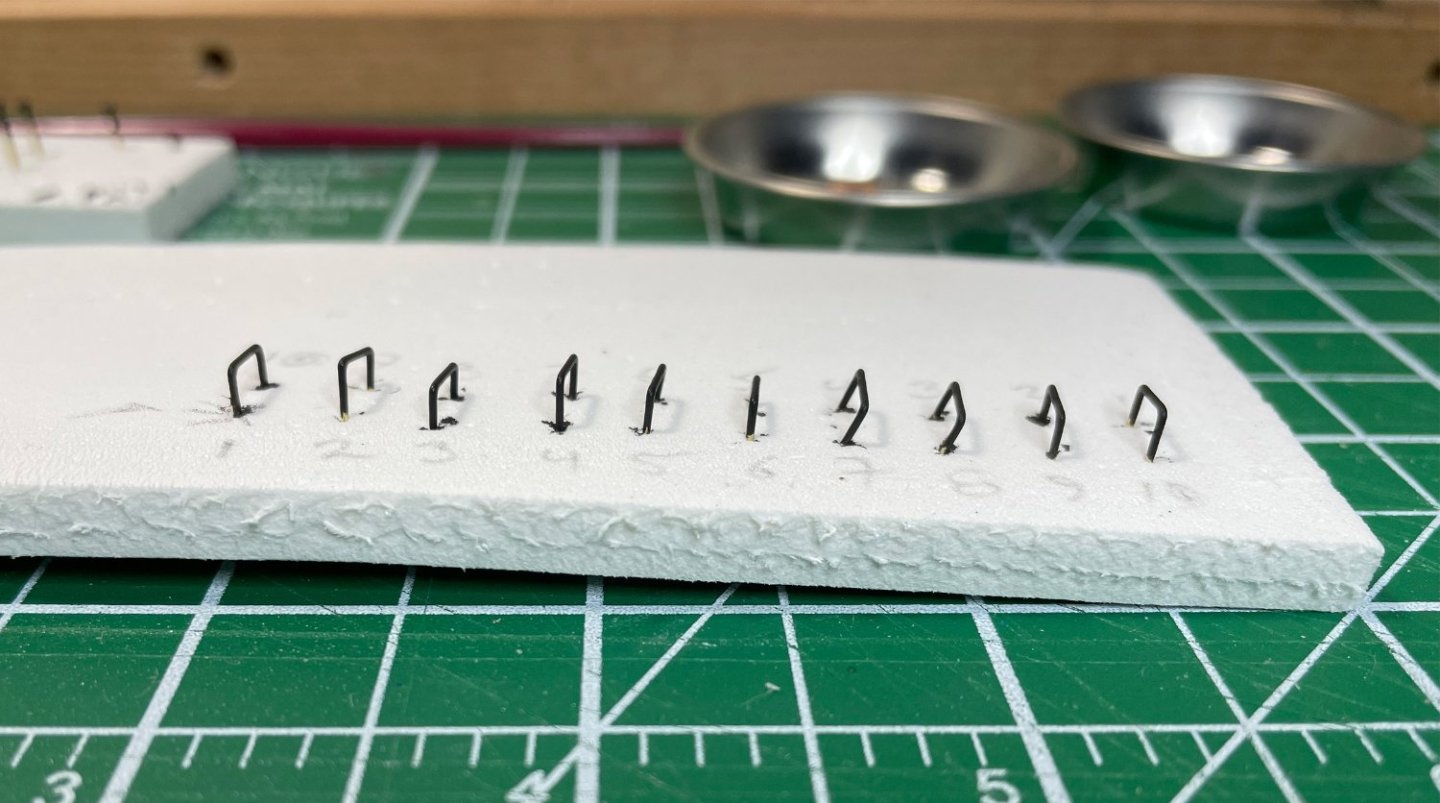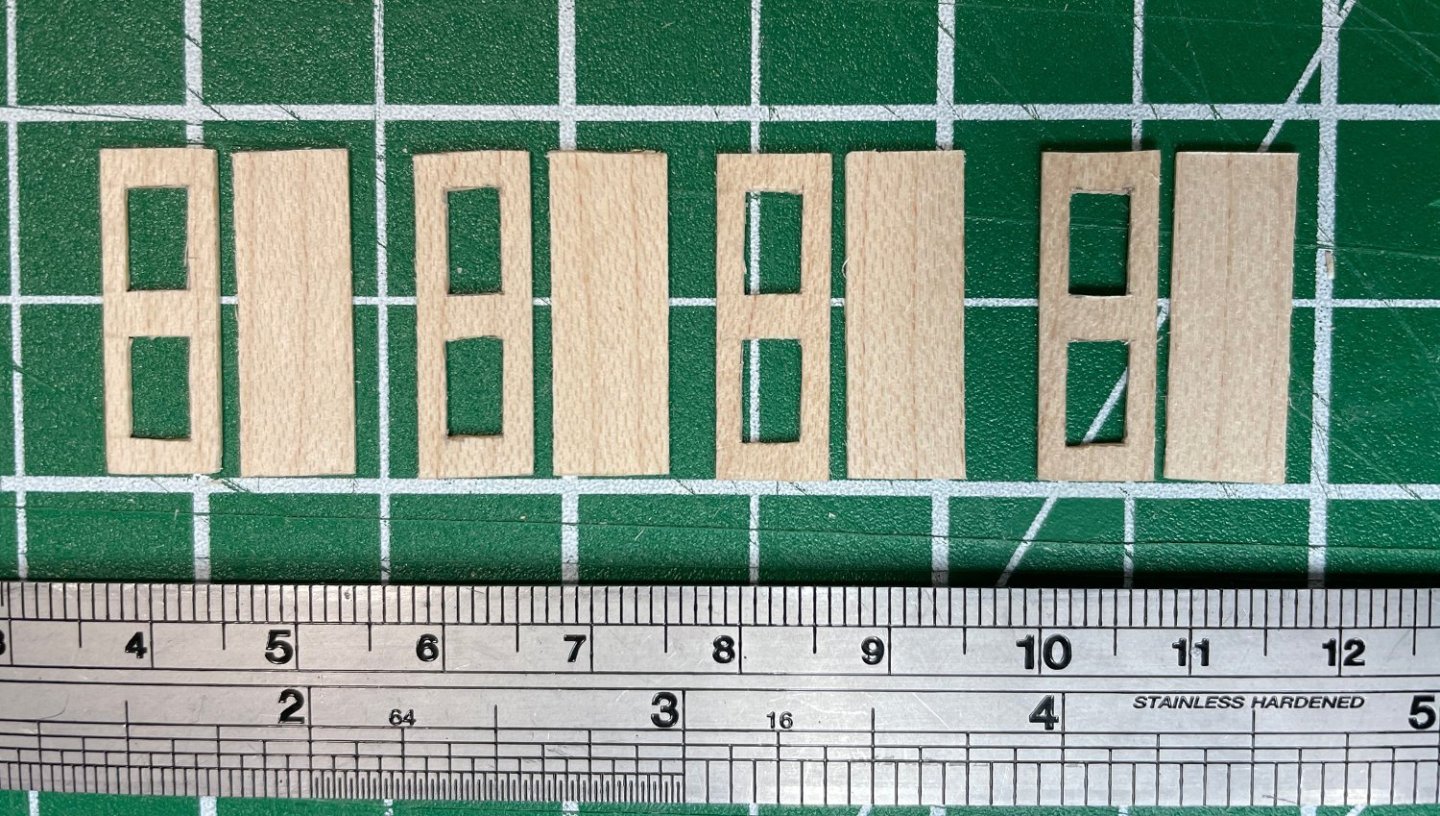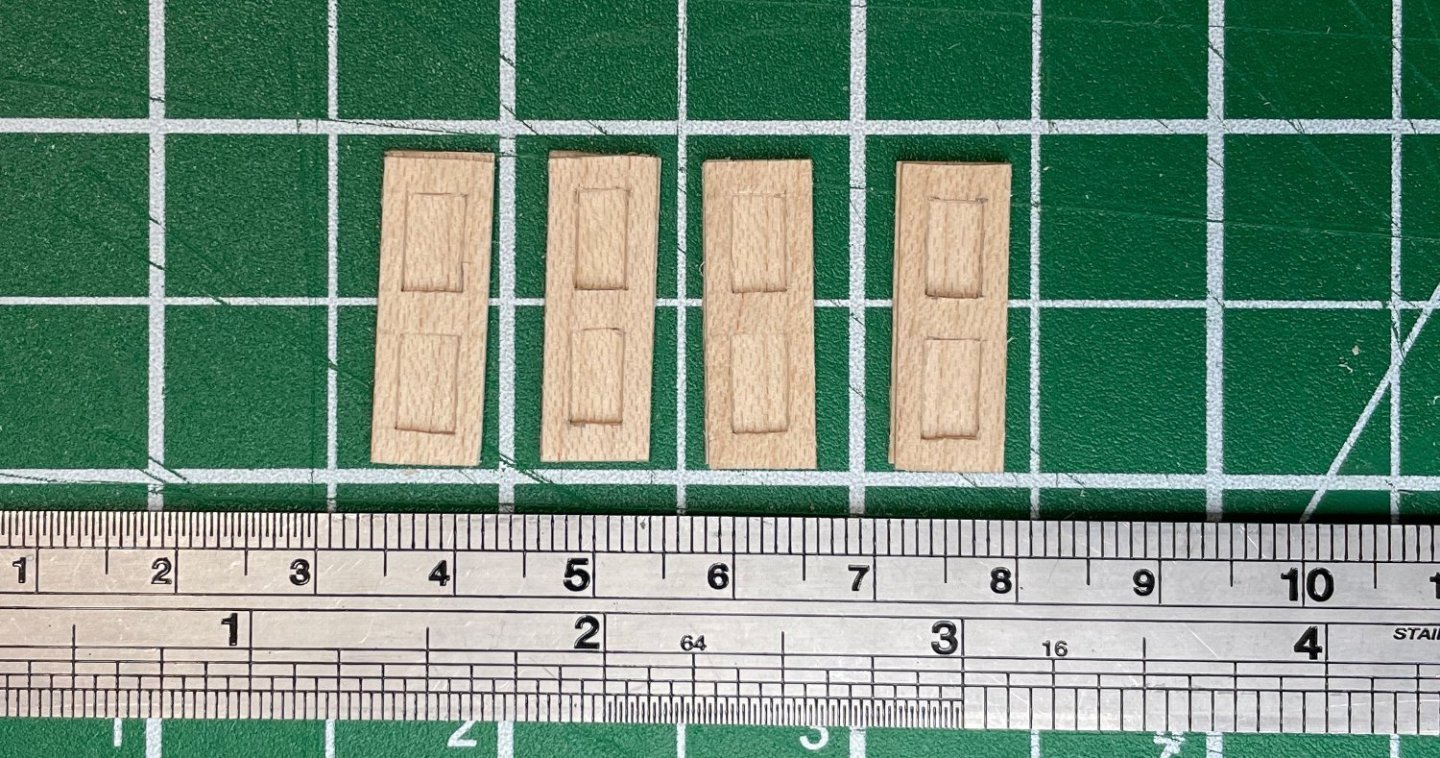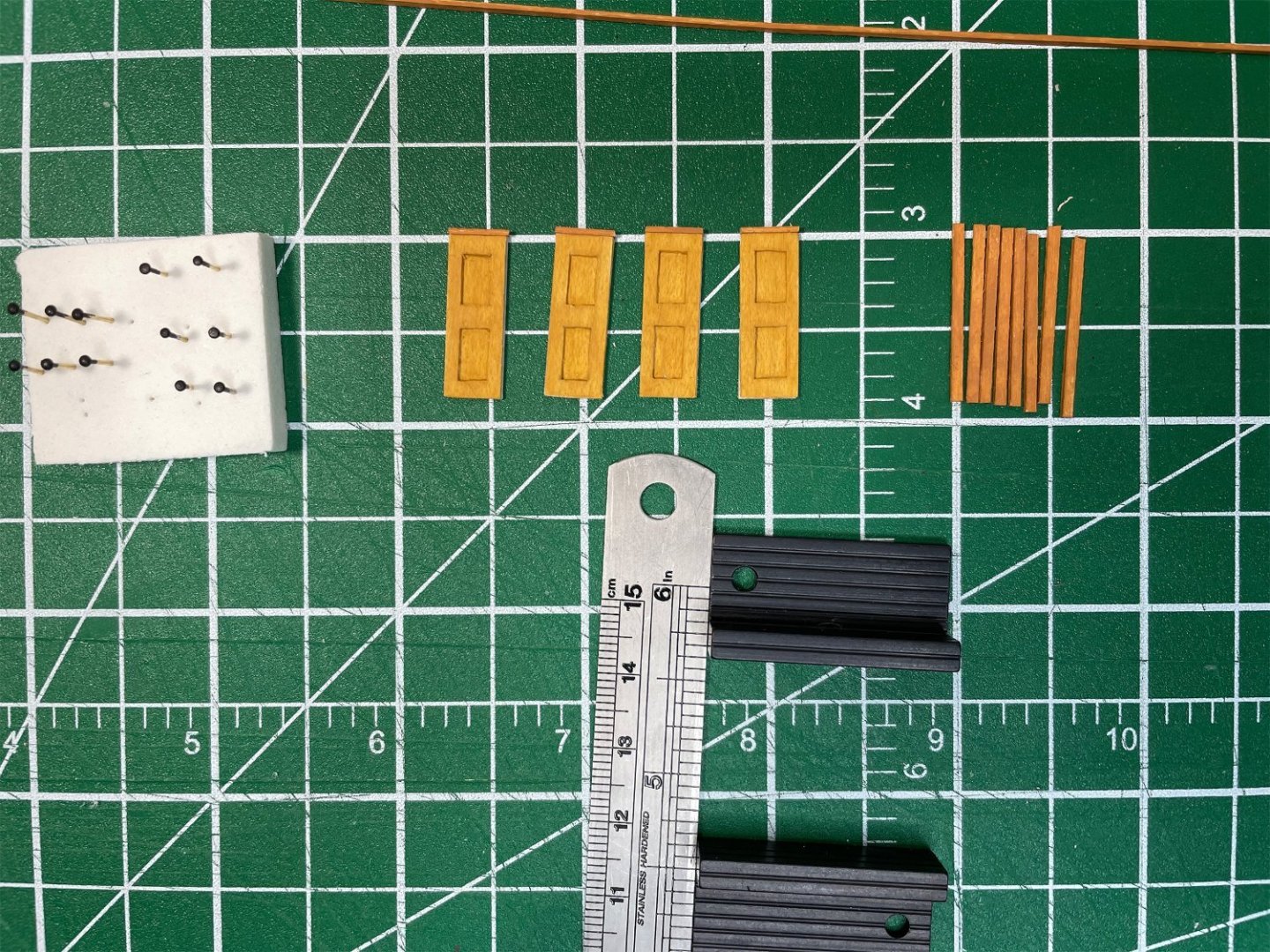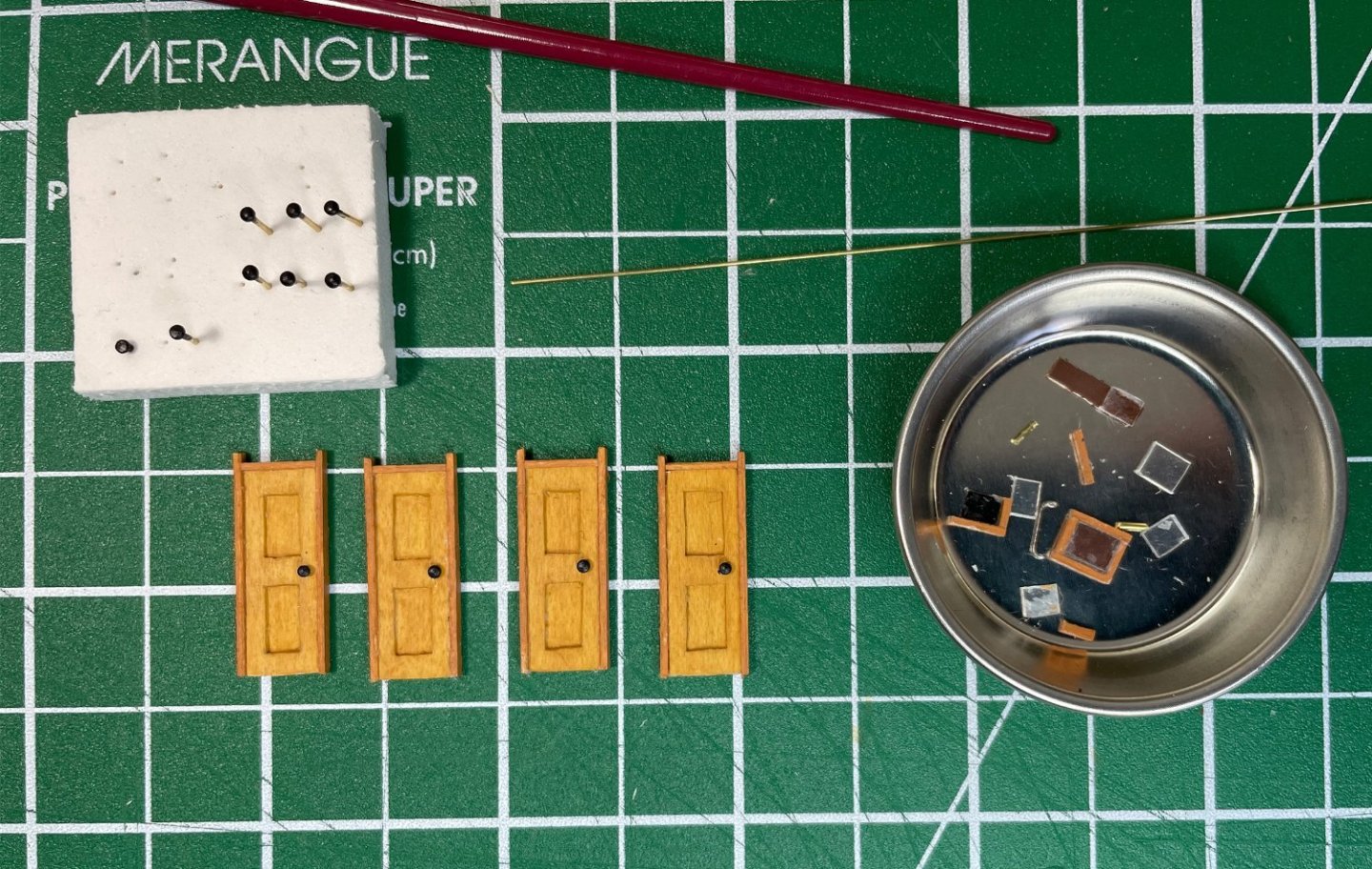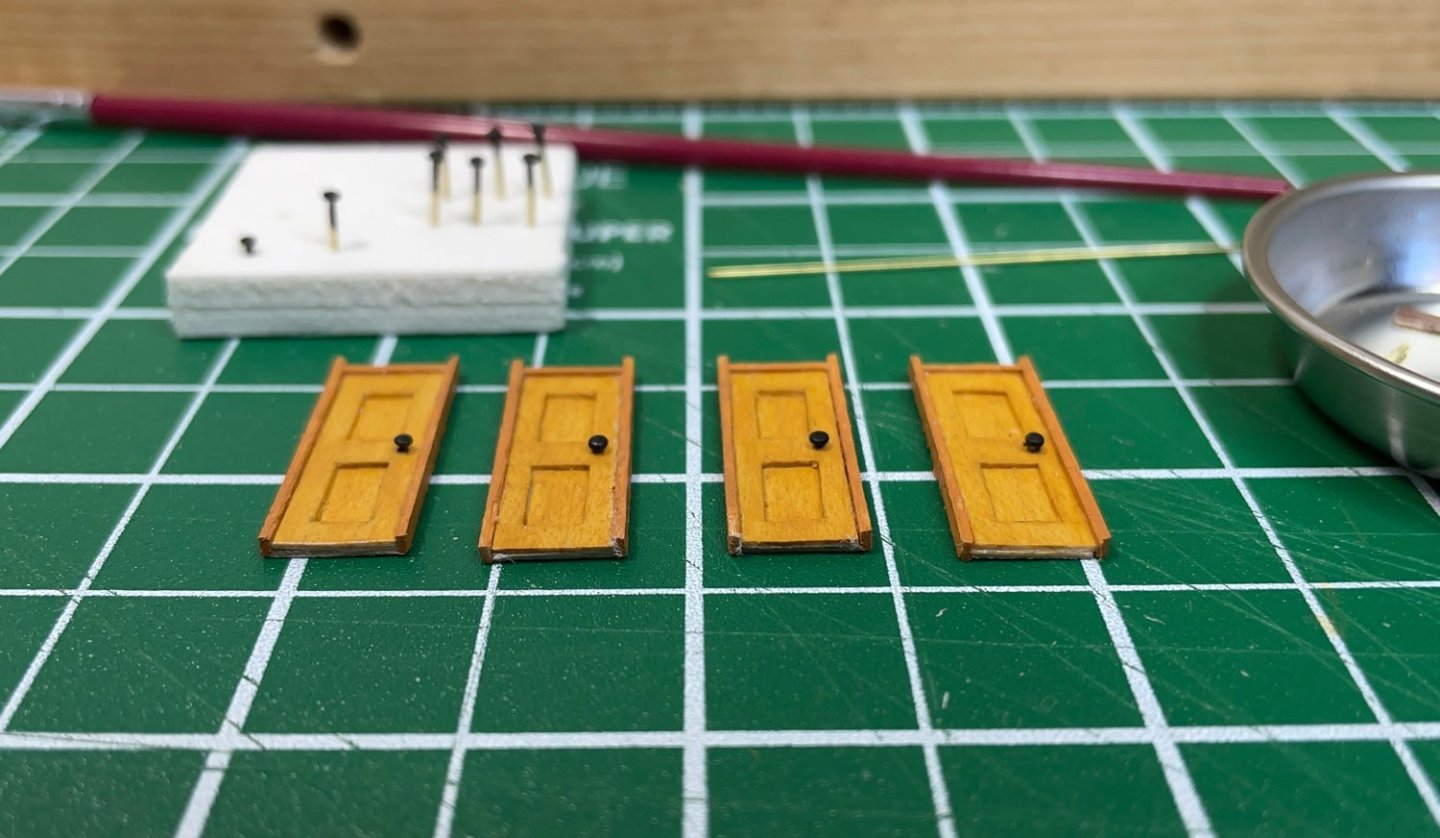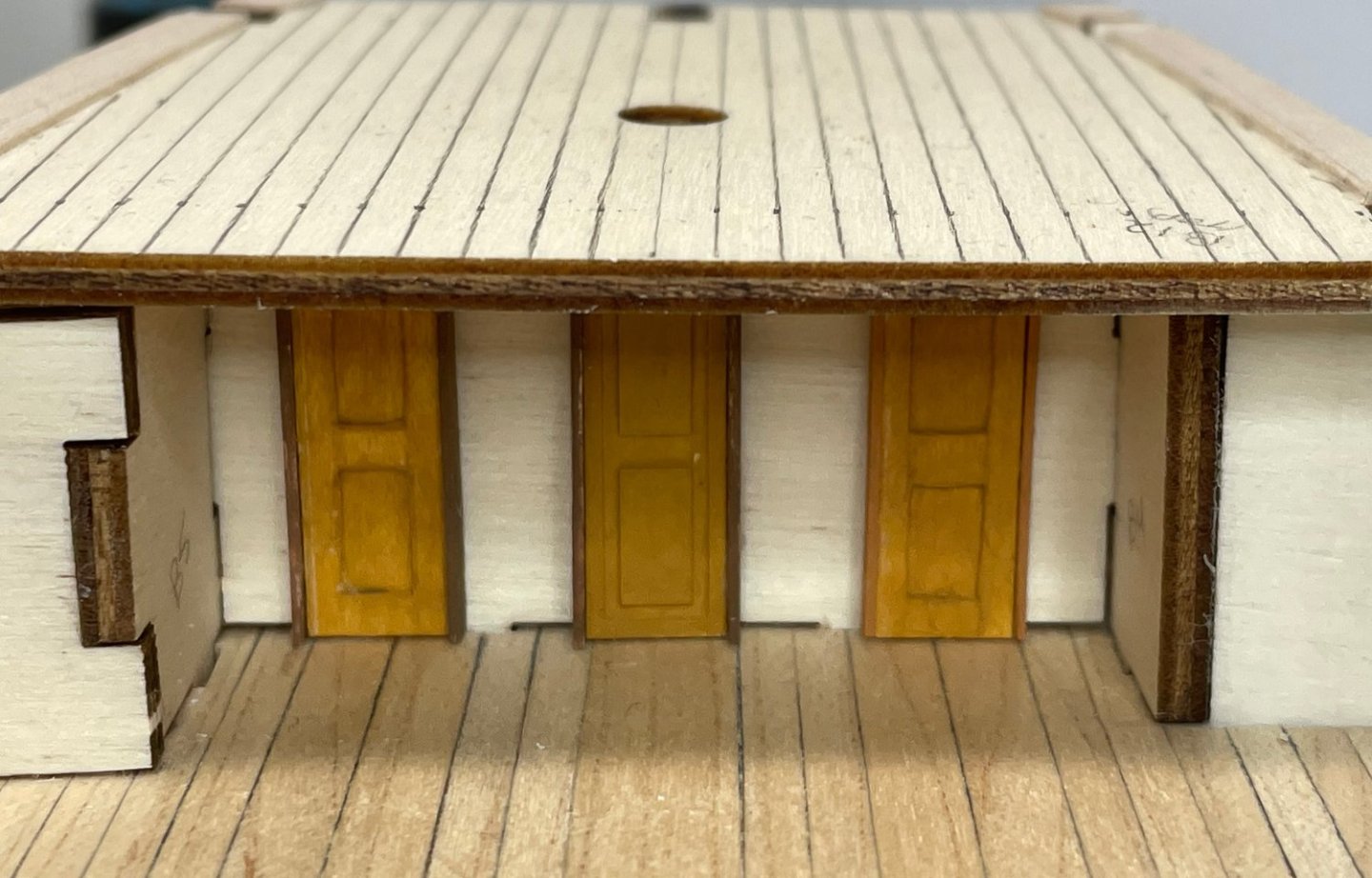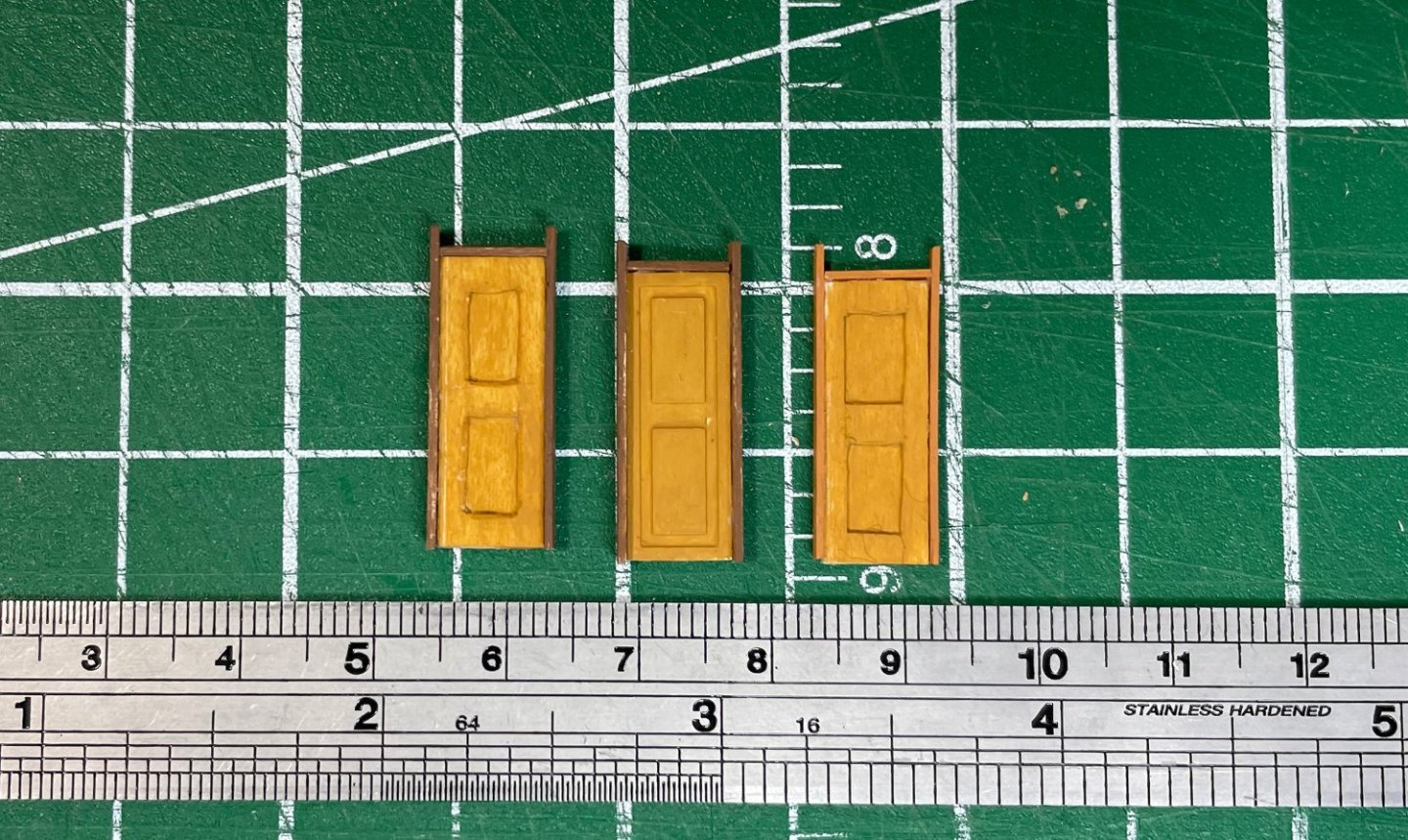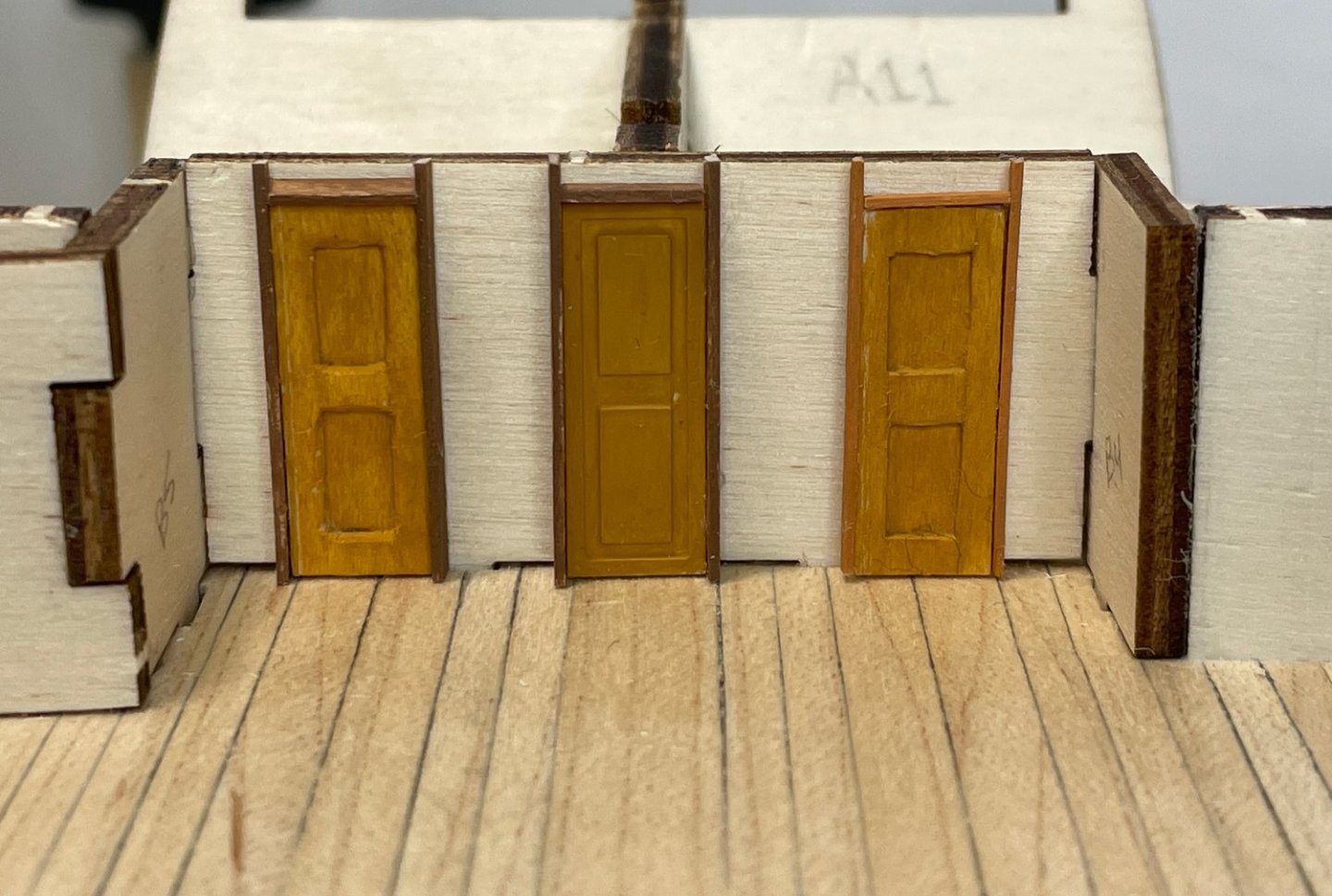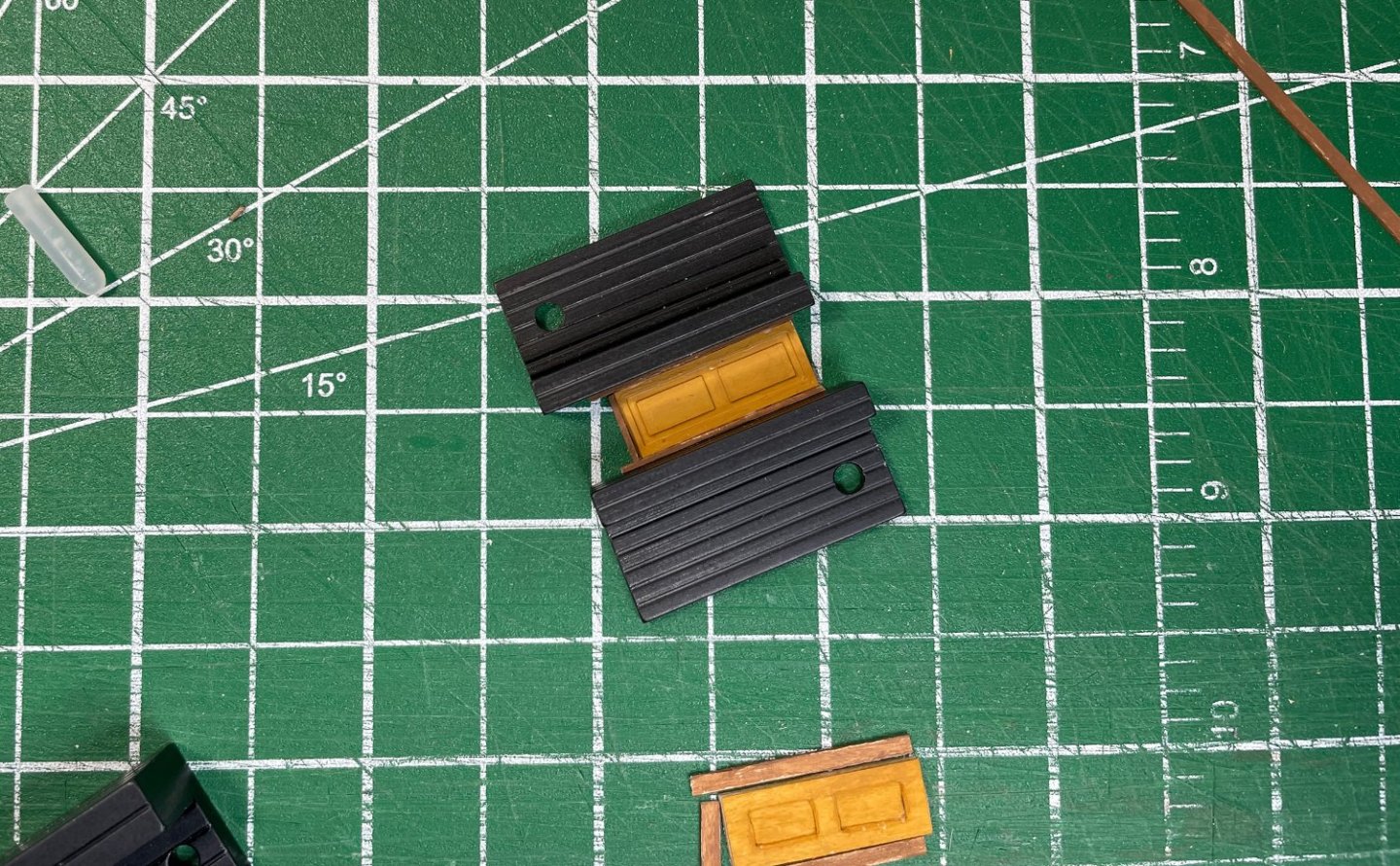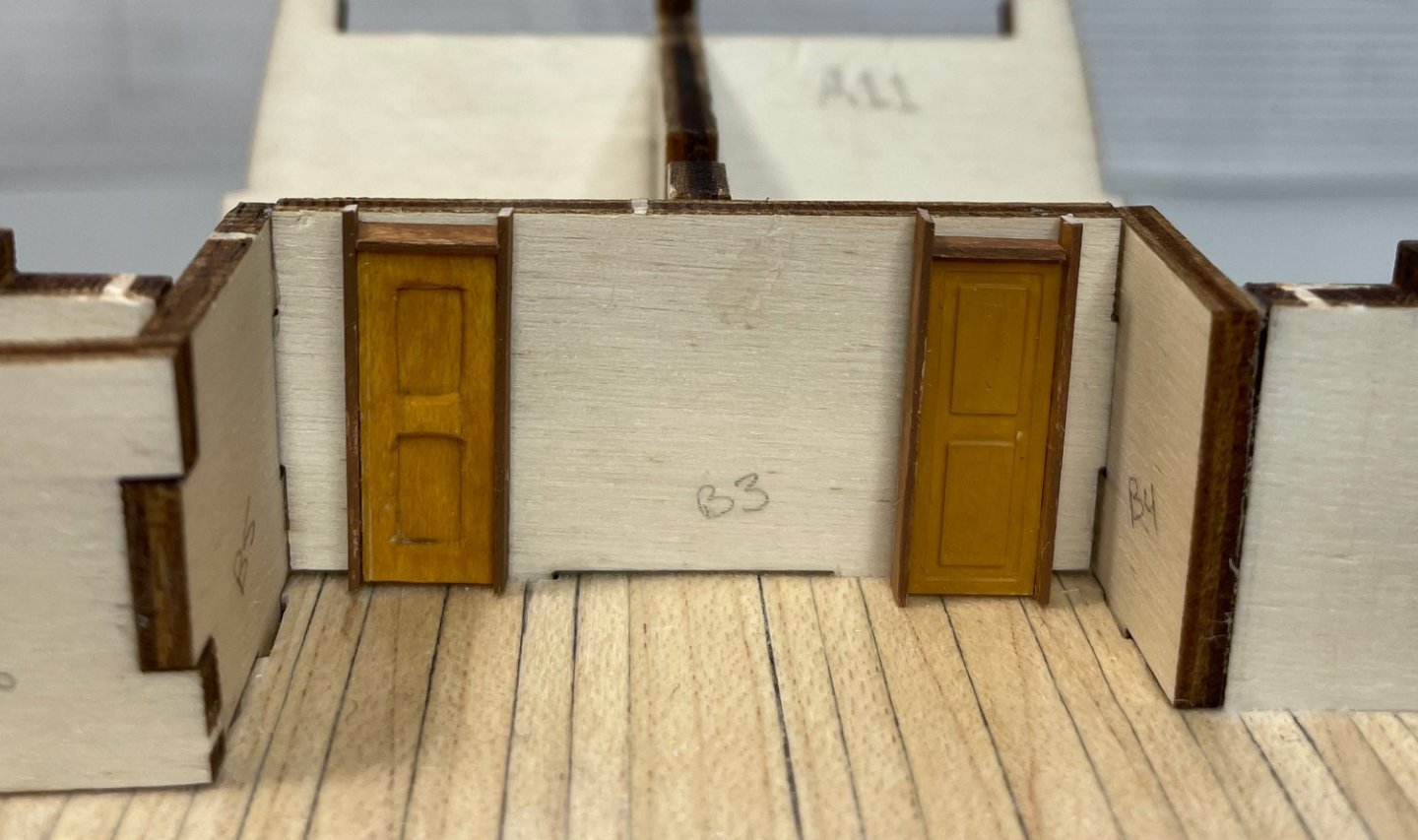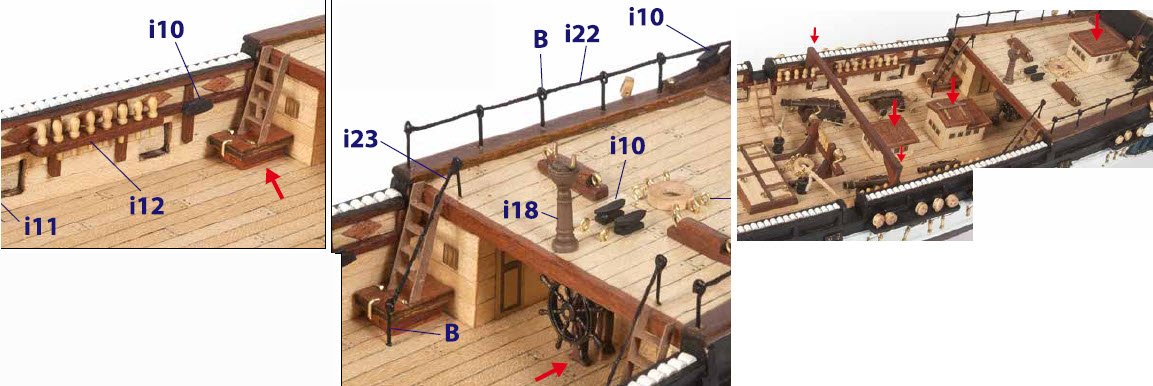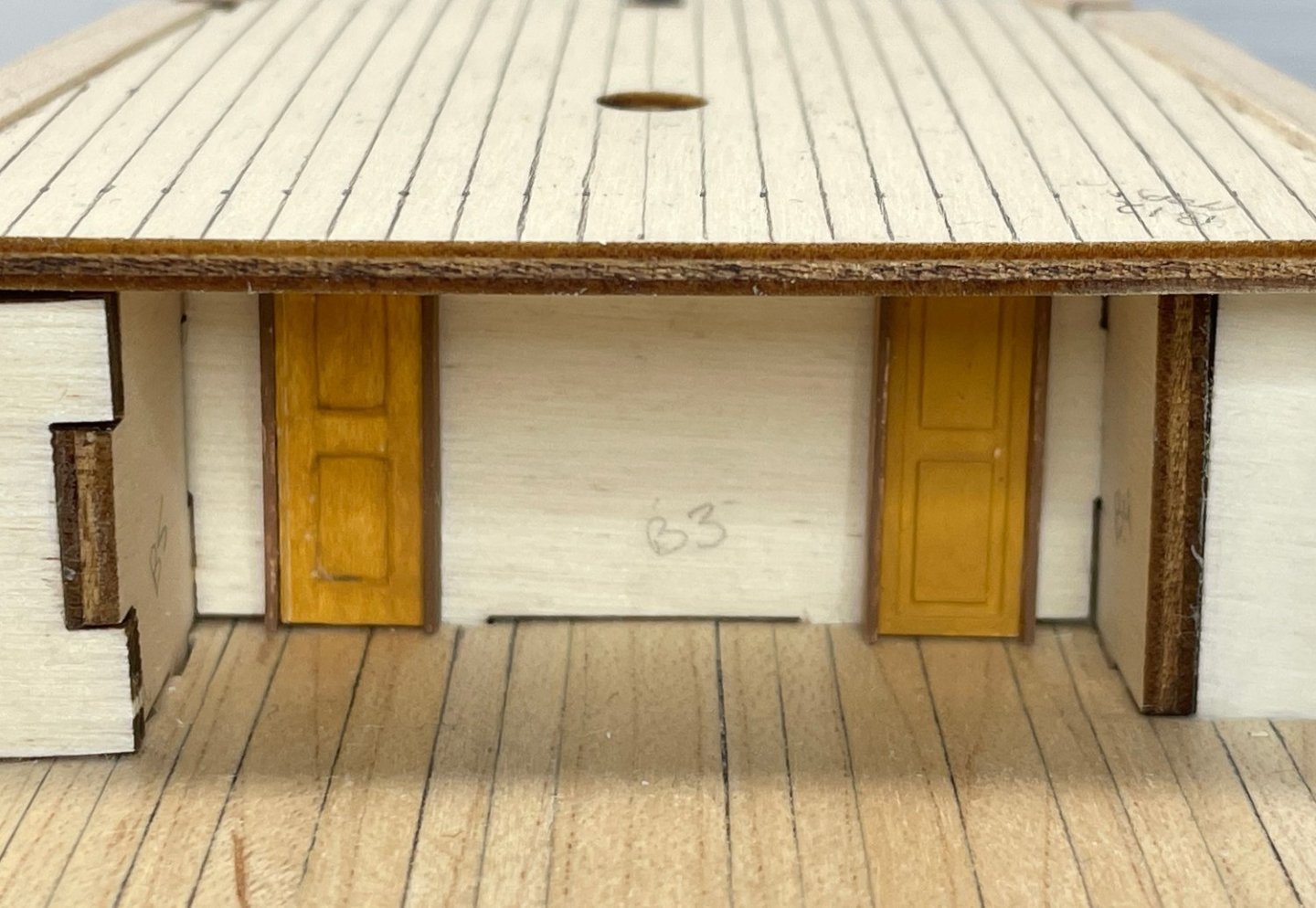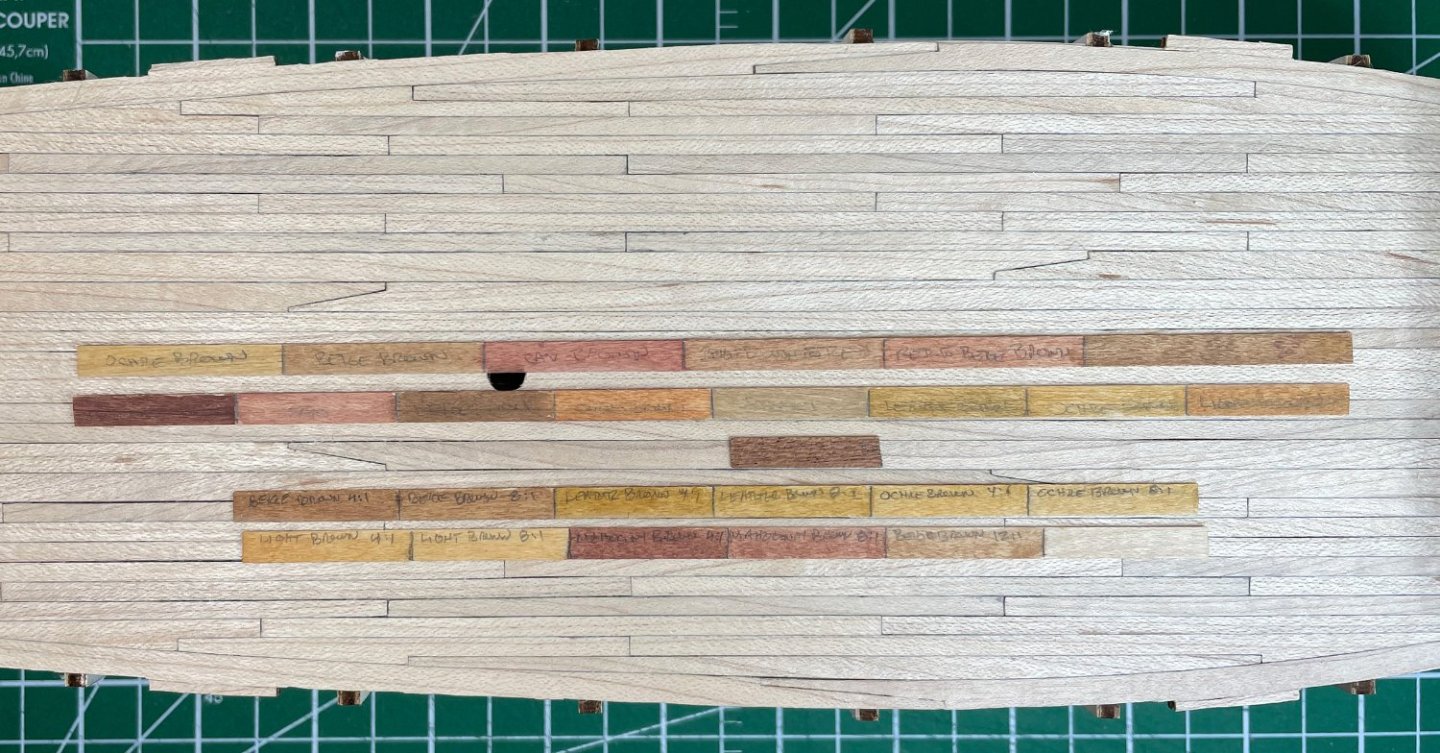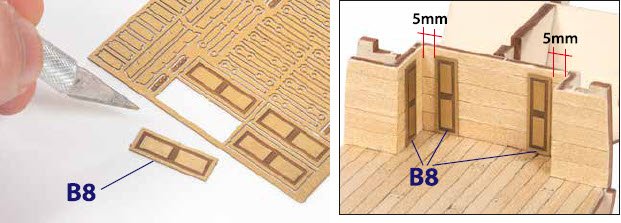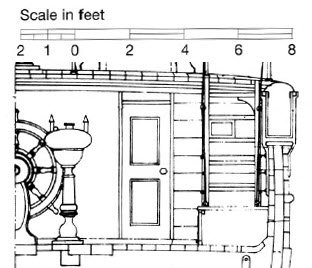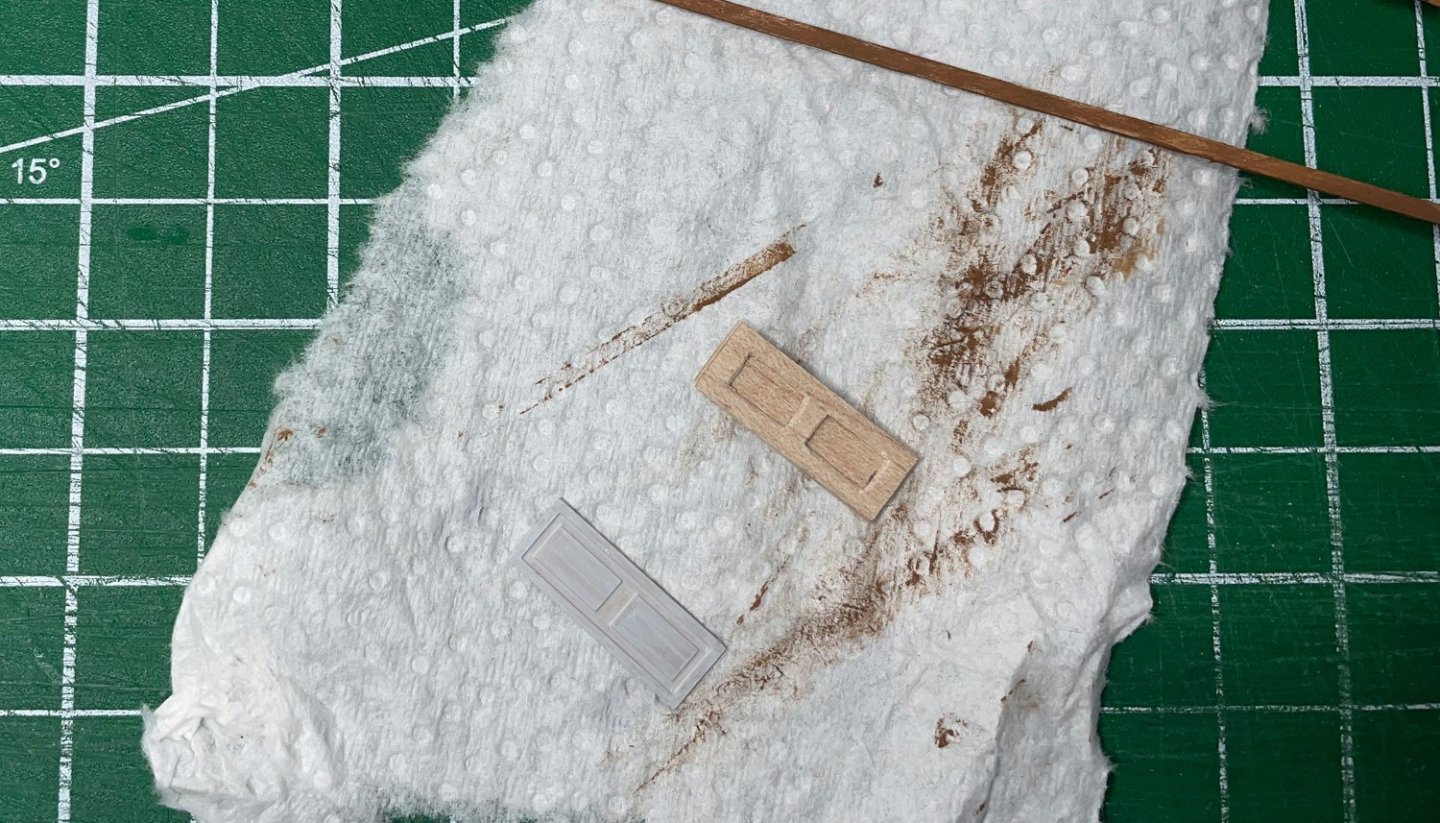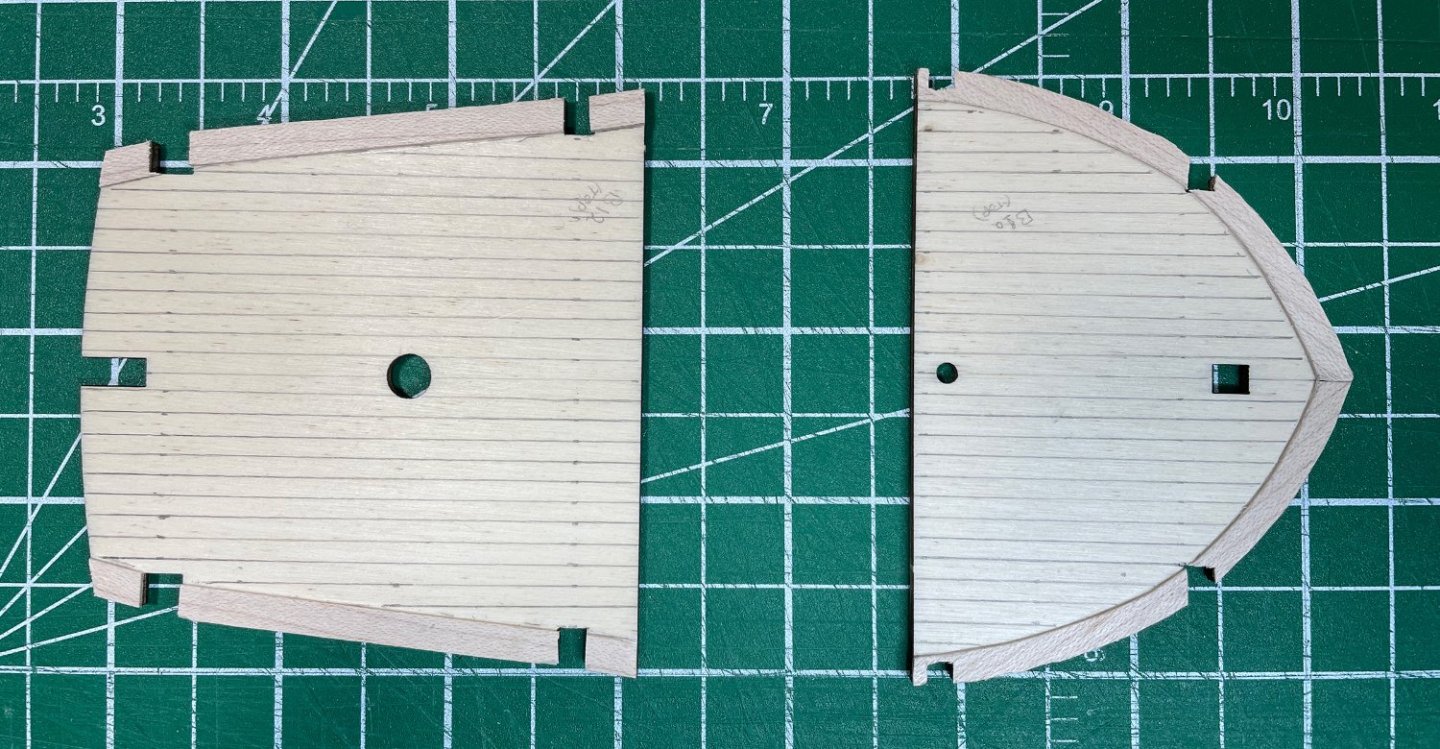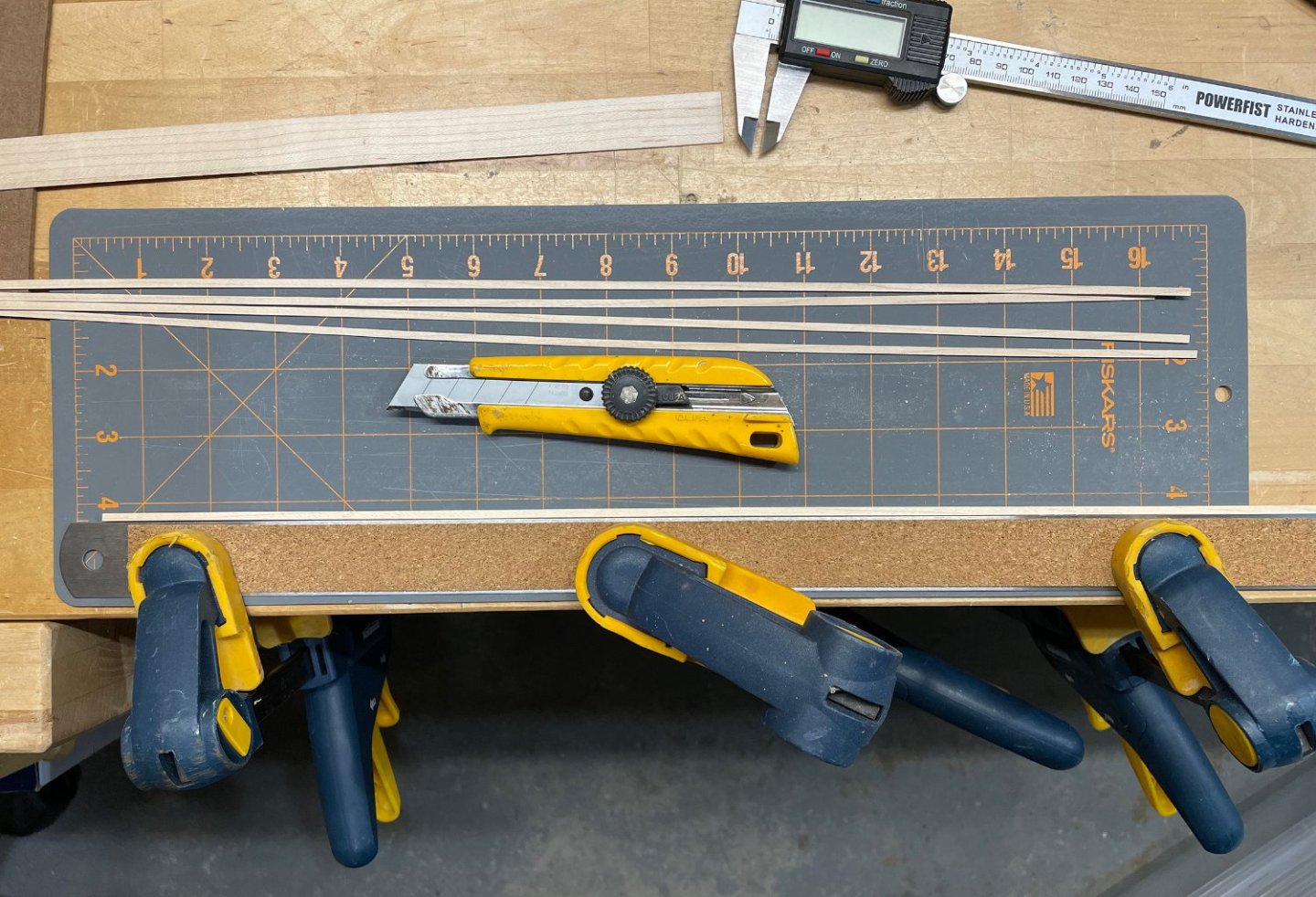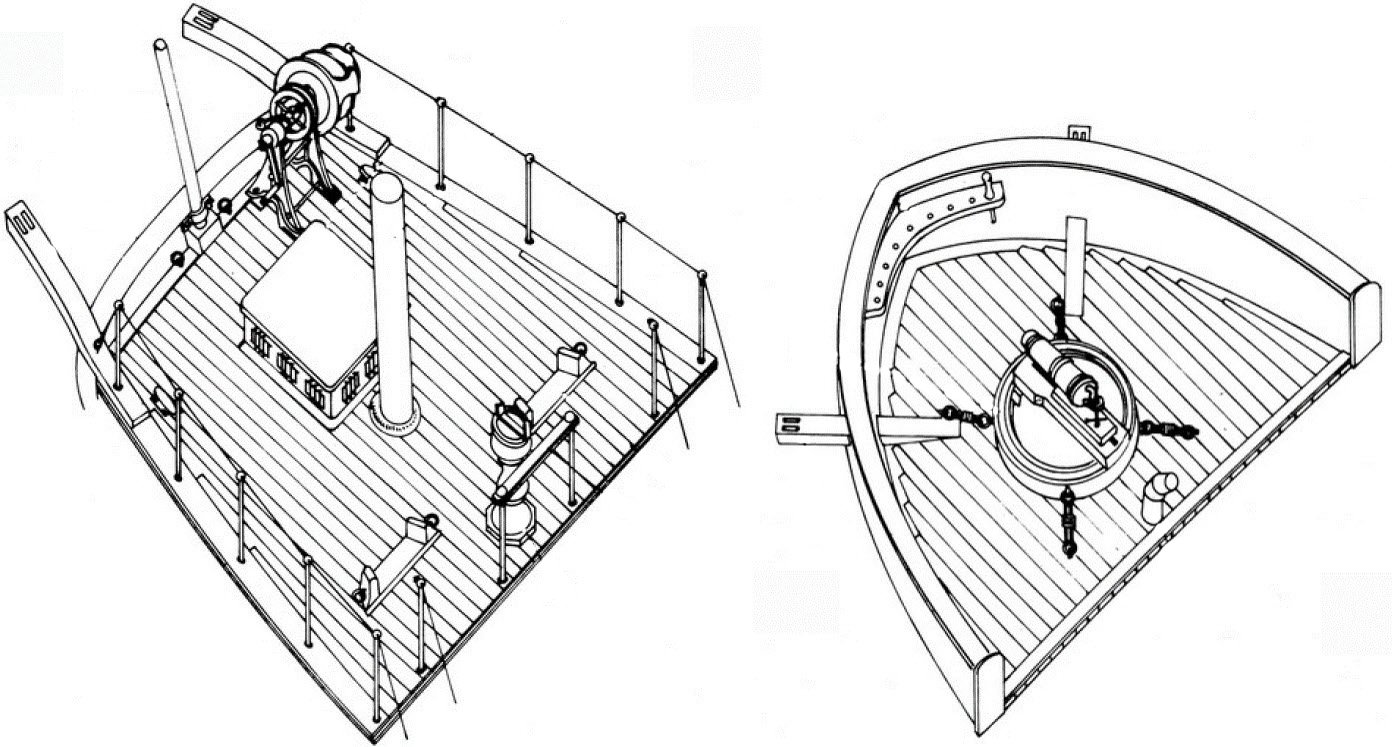-
Posts
34 -
Joined
-
Last visited
Profile Information
-
Gender
Male
-
Location
Thunder Bay, Canada
-
Interests
Wooden Ship Models, Woodworking, Family History, Kayaking
Recent Profile Visitors
The recent visitors block is disabled and is not being shown to other users.
-
 RobTBay reacted to a post in a topic:
HMS Beagle by brunnels - OcCre - 1:60 - first build
RobTBay reacted to a post in a topic:
HMS Beagle by brunnels - OcCre - 1:60 - first build
-
 RobTBay reacted to a post in a topic:
HMS Beagle by brunnels - OcCre - 1:60 - first build
RobTBay reacted to a post in a topic:
HMS Beagle by brunnels - OcCre - 1:60 - first build
-
 RobTBay reacted to a post in a topic:
HMS Beagle by Patrick - OcCre - 1/60
RobTBay reacted to a post in a topic:
HMS Beagle by Patrick - OcCre - 1/60
-
 RobTBay reacted to a post in a topic:
HMS Beagle by brunnels - OcCre - 1:60 - first build
RobTBay reacted to a post in a topic:
HMS Beagle by brunnels - OcCre - 1:60 - first build
-
 RobTBay reacted to a post in a topic:
HMS Beagle by brunnels - OcCre - 1:60 - first build
RobTBay reacted to a post in a topic:
HMS Beagle by brunnels - OcCre - 1:60 - first build
-
 RobTBay reacted to a post in a topic:
HMS Beagle by Capella - OcCre - 2nd build
RobTBay reacted to a post in a topic:
HMS Beagle by Capella - OcCre - 2nd build
-
 RobTBay reacted to a post in a topic:
HMS Beagle by brunnels - OcCre - 1:60 - first build
RobTBay reacted to a post in a topic:
HMS Beagle by brunnels - OcCre - 1:60 - first build
-
 RobTBay reacted to a post in a topic:
HMS Beagle by Patrick - OcCre - 1/60
RobTBay reacted to a post in a topic:
HMS Beagle by Patrick - OcCre - 1/60
-
 RobTBay reacted to a post in a topic:
HMS Beagle by The Gimps Chimp - FINISHED - OcCre - 1:60
RobTBay reacted to a post in a topic:
HMS Beagle by The Gimps Chimp - FINISHED - OcCre - 1:60
-
 RobTBay reacted to a post in a topic:
HMS Beagle by boerscht - OcCre - 1:60
RobTBay reacted to a post in a topic:
HMS Beagle by boerscht - OcCre - 1:60
-
 Auger reacted to a post in a topic:
HMS Beagle by RobTBay - OcCre - 1:60
Auger reacted to a post in a topic:
HMS Beagle by RobTBay - OcCre - 1:60
-
 Cathead reacted to a post in a topic:
HMS Beagle by RobTBay - OcCre - 1:60
Cathead reacted to a post in a topic:
HMS Beagle by RobTBay - OcCre - 1:60
-
 The Gimps Chimp reacted to a post in a topic:
HMS Beagle by RobTBay - OcCre - 1:60
The Gimps Chimp reacted to a post in a topic:
HMS Beagle by RobTBay - OcCre - 1:60
-
Thanks Chimp. I’m trying to do as clean a first layer as possible, partly just as practice for the more visible second layer. But you’re right, the first layer is about defining the shape of the hull …as long as you get there, it doesn’t completely matter how. 🙂Having said that, I’m still striving for using as little wood filler as possible. Mostly just to see if I can. I’m kind of thinking that the number or completeness of the filler bulkhead pieces may be less critical than just putting some kind of filler in the first and last two existing bulkhead sections. Some approaches might be better than others, but anything is better than nothing! Back to the workbench, and see what I come up with! Rob
-
 ccoyle reacted to a post in a topic:
HMS Beagle by RobTBay - OcCre - 1:60
ccoyle reacted to a post in a topic:
HMS Beagle by RobTBay - OcCre - 1:60
-
 The Gimps Chimp reacted to a post in a topic:
HMS Beagle by RobTBay - OcCre - 1:60
The Gimps Chimp reacted to a post in a topic:
HMS Beagle by RobTBay - OcCre - 1:60
-
 Patrick B reacted to a post in a topic:
HMS Beagle by RobTBay - OcCre - 1:60
Patrick B reacted to a post in a topic:
HMS Beagle by RobTBay - OcCre - 1:60
-
Preparing the hull for planking! And no, I didn't completely drop off the forum ...just had a busy summer. I did spend some of that time pondering how I'll be planking the hull, since I'm not planning on using the OcCre method. I should go back and review the planking videos and articles on the forum before really getting stuck in to the planking. On a few build logs (not necessarily just Beagle builds) I noticed that sometimes the bulkhead spacing near the bow and stern can cause the planks to bend at an odd angle as they cross over the bulkhead. So, I figure I'm going to need more support between the bulkheads to keep the planks running on a smooth flow. Of course, pre-bending the planks should also help with that a lot. But do I fill in the spaces with solid wood, or just add additional filler bulkheads? I'm thinking at the moment I like the idea of adding bulkheads. So, I built a few pieces to test fit the idea, see if I like the results. I took the remains of the parts sheet for the bulkheads and traced the outline of two subsequent bulkheads on top of each other, and then added some additional lines by eye to create in-between pieces. Since they will be sanded down anyway, as long as they are slightly oversized, the actual dimensions of each only needs to be close (absolute accuracy not essential). I'm only really concerned about the first and last couple of bulkhead spacings where most of the extreme bending will be occurring (and of course at the very bow as well). The rest I figure should not be a problem (I hope ). Here is an image of the pieces just test fitted, and then a closer view of the bow and stern. I still have a little bit of adjusting to do to the pieces, but that's the idea. However, I got to thinking that maybe I should thicken the shims at the bottoms, and on each edge of the bulkheads in the bow section as well? Which I think I will do. I'm also wondering if I need all those additional support bulkheads, perhaps where I had three, two would do, etc.? I may still add that angled bulkhead piece at the bow, or maybe just fill it in entirely. What do you all think, more or fewer ...or just go solid wood?? I'm thinking at the moment to add the additional shim pieces and go with one less additional bulkhead support in each section (at least at the bow end, the stern will probably still get two), more like the last picture above but with the additional shims added at the bottoms. Thoughts? Feels good to be back at the workbench! Rob
-
 Cathead reacted to a post in a topic:
HMS Beagle by RobTBay - OcCre - 1:60
Cathead reacted to a post in a topic:
HMS Beagle by RobTBay - OcCre - 1:60
-
 Cathead reacted to a post in a topic:
HMS Beagle by RobTBay - OcCre - 1:60
Cathead reacted to a post in a topic:
HMS Beagle by RobTBay - OcCre - 1:60
-
 Cathead reacted to a post in a topic:
HMS Beagle by RobTBay - OcCre - 1:60
Cathead reacted to a post in a topic:
HMS Beagle by RobTBay - OcCre - 1:60
-
 DonSangria reacted to a post in a topic:
HMS Beagle by RobTBay - OcCre - 1:60
DonSangria reacted to a post in a topic:
HMS Beagle by RobTBay - OcCre - 1:60
-
Bulwark interior planking complete! I went with thinner boards than provided in the kit, 3.5 mm width (to reflect Marquardt's drawings) rather than the provided 5.0 mm strips. I still used the provided sycamore strips, just cut them down. I wasn't worried about the bit of wastage since I had planked the deck with maple rather than the provided sycamore, so there was lots of sycamore strips remaining. I stained the planking with the same thinned down ochre brown I used for the forecastle and quarterdeck bulkheads. I noticed that in the instructions they never stain the plywood edges in the gunports. Some of that plywood is still exposed in the final assembly. I think the kit is relying on the sycamore and plywood being a similar colour and choosing not to complicate things. Me, I can't seem to resist complicating things! Also, since I stained the planking, leaving the plywood unstained would really stand out! So, I put a bit of the same thinned down ochre brown on the interior edges of the gunports. I'm guessing I will likely have to do a bit of touchup before I'm done, but at least they have been stained at least once while it's still easy to do. Here is an overview picture and a couple of close up shots of the bulwarks (and waterway detail)... I'm happy with the final look of the added waterway at the deck/bulwark join now that the bulwark planking is complete. It took a bit more work, but it adds that bit of detail and hides an obvious joint line. And here is one final picture of where the build is at so far... Now, on to prepping and planking the hull! As I work on sanding the frame bulkheads, I'll also be reading up on hull planking (and watching the videos) from the forum. I'm going to do my best to do it the "proper" way! Rob
-
Adding the waterway along the join between the deck and the bulwark was on my wish list of things to add to the model. Not sure why this one got in my head, I just thought that it would be a nice detail that would add a touch of additional realism, which often didn't seem to be done ...maybe for a reason! From Marquardt's Anatomy of the Ship drawings (see below) the waterway would form the final deck plank (margin plank) or the base of the bulwark depending on how you look at it. I wasn't going to try and incorporate that additional profile height into the margin plank on the deck ...maybe someday when I'm up to doing scratch builds, but for this one I felt it was just a slight reach beyond my capabilities to pull off. Therefore, I was going to add it after the deck and bulwark planking was done. However, I got the idea that it would look better if it was installed before the bulwark planking, and then the bulwark planking could come down to meet it cleanly ...and hopefully make it look more like the integrated piece it's supposed to be, rather than added on at the end. I created a tiny 1.3 mm x 0.8 mm maple strip to match the deck planks. Then I used a #11 knife blade to scrape off the corner of the strip to make the profile almost triangular. I tried cutting off the corner along the strip, and then sanding off the corner, both of which left it a little rough without a nice straight edge. I eventually used the test piece I made way back when I was figuring out how I would do the deck planking. The test planking had been stuck on a piece of scrap plywood which provided a nice backstop which I could then hold the #11 blade perpendicular to and draw the strip through the gap. Then I just kept slowly moving the blade a little closer to the backstop and drawing the strip through until I achieve the desired profile. Installing the waterways along the main deck was no problem, since there was very little curve and the tiny piece bent laterally enough that it went in without even needing to be clamped. The pieces at the bow on the foredeck was another matter. They would have snapped if I tried to bend them laterally into place. So, I built another form just like I did for bending the bulwarks (just in 1/4" plywood this time). I then soaked the waterway piece to allow them the flexibility to be bent to the form and clamped it in place, using smaller clamps this time so that I didn't crush the tiny pieces. Once they were dried and set using the heat gun, it came off the form and held the lateral bend matching the form just nicely. I then flipped the form and did the waterway for the other side. Since they were formed to the bulwark shape, they installed without a hitch. I did use a couple of small clamps to make sure they didn't move while the glue dried, but they was no real stress on them to install. And here are a couple of pictures of the waterways installed. Once the bulwark planks are installed, the waterways won't appear quite as wide. I think that worked out pretty well! Now on to the bulwark planking. Rob
-
Forming and installing the bulwarks. The forward and aft couple of bulkhead frames required some sanding to make sure the shape of the bulwarks flowed nicely. This wasn't particularly hard, but I took my time and kept tweaking until I was satisfied. The instructions/vidoes showed using a can as a form to bend the bulwarks. Rather than trial and error bending around a single round form, I thought it would be better to have a form that was the correct shape for the bulwarks. I printed out a piece of the plans (at full plan scale) and pasted it onto a scrap piece of 2x6 pine. Then cut it out on the bandsaw along the line of the bulwark in the plan to make the form. I only really needed the form for the bow portion of the bulwarks, since the rest has very little curve to it and was easy to bend into place without any straining. Then came the soaking of the plywood part. This step made me a little bit nervous. Getting plywood wet is generally considered the way to delaminate plywood! However, the instructions called for a 20 minute soak, which is what people seem to do successfully in their build logs. Trying to bend the dry plywood to the form would very likely have caused it to crack, it needs the wood to be softened up a little to take the bend. So, soak it I did. I only put the bow section of the bulwark in the water, since that is the only part I was going to bend on the form. Then I generously clamped it to the form and used a heat gun to dry it back out again and set the new shape while still clamped. Once I completed the first bulwark, I flipped the pine form and did the second bulwarks with the curve in the opposite direction. I wish I had thought to take a picture of the bulwark once it came off the form, it kept the shape perfectly. Which means it took very little clamping pressure to install the bulwarks on the ship. I just used modified binder clips to hold it in place at each bulkhead and a little bit of painters tape to ensure it stayed exactly where I wanted it. And a picture of the two bulwarks installed... I was dreading this step a bit. But in the end, it went smoothly, and I didn't encounter any problems. Next step is to decide whether I'm going to add a waterway detail or not along the deck/bulwark joint first, or just move straight to planking the inside of the bulwarks as in the instructions? Rob
-
Deck planking on the forecastle and quarterdeck is now complete and the decks installed. It went fairly well, complete with joggling the deck planks where they meet the margin boards. I went for the correct impression more than precisely accurate for prototype construction. It's close and gives a good impression of what is shown in the Marquardt's Anatomy of the Ship. I'm happy. If anyone recalls a comment from @Whitebeard a while back reminding me to not cut out the reference holes that show in the plywood subdeck when installing the deck planks. I think my answer was something like "sounds like something I might do, but I'm fully aware and watching out for that!". I guess I have to eat my words. One evening I had a few minutes to spare, and I sat down and trimmed up the margin boards I had installed ...and cut out the matching reference holes! I didn't notice what I had done until I had finished the quarterdeck planking and was half done with the forecastle deck planking. I filled in the holes with some 1.0 mm maple (thick enough to fill the space but not interfere with the reference tabs from the frames). The quarterdeck margin boards will be covered by another piece anyway, only a little bit will show. The forecastle repair will show a little more, but it's only in the margin board and there will likely be enough busy stuff going on the deck to distract from it. I don't think it will show much in the end. Oh well, it could have been a bigger error, and not hard to recover from. Here are the two decks installed... And I'll leave you with a picture of the current state of the build... That catches you up for the last couple weeks of work. The doors and windows took some "trial and error" effort to come up with something I was happy with, but I think it was worth the effort. Next, it's on to the installation of the bulwarks. Rob
-
The bulkeads under the quarterdeck and forecastle have now been completed, complete with doors and windows. First off, the doors were installed. I added the doors and windows before adding the planking. As much as possible, I wanted the doors to have the impression that they were in the walls, not on top of the walls ...so I took advantage of every little bit of depth I could get, short of cutting holes in the bulkeads for the doors and windows! I also passed on the etched brass windows in the kit and made some simple rectangles from 0.5 mm maple stock, that surrounded a piece of acetate glued to some maple painted dark brown. I experimented with trying to attach the acetate to the frame only, but the whole structure was too delicate (the thickest piece only being 0.5 mm thick!). After a number of different attempts, I went with simply gluing the acetate to the painted backing board. The glue dries not completely clear, but it gives the window a kind of old imperfect window look ...which I think is actually kind of fitting in the end. At least that's what I keep telling myself. I took some 0.51 mm (0.02") brass rod and bent a set of safety bars to put over the windows (painted black). I experimented with several different ways of depicting and attaching the safety bars and went with the bars bent over the outer frame of the window. After attaching the doors and windows, I added the planks to the bulkheads. The plank widths were cut down to 3.5 mm from the 5.0 mm sycamore stock provided in the kit. This gives approximately the size as to what is shown in Marquardt's Anatomy of the Ship. I stained the planks a thinned ochre brown to match the doors. The door frames were stained a slightly different light brown color to provide a bit of visual contrast. This should give a nice but subtle contrast between the bulkhead planks, the deck, and eventually the sapelli highlight color. And here are a couple of pictures with the sub-decks for the forecastle and quarter decks temporarily put in place to give an idea of the final effect. Now it's on to finishing the planking of the forecastle and quarterdecks. Rob
-
Speaking of 99 ways... I'll come to the windows in a minute! But the final production of the doors is done! The version of the doors I went with are made up of two layers, a backing layer which also become the interior panels and a second piece that sits on top to become the door stiles and rails. Then I added thin stips on the two sides and across the top to represent the door frame itself. The side frames will reach up to the bottom of the deck above (thus they look like they stick up a bit). The doorknobs were made from the small brass pins/nails provided in the kit. I wasn't happy with their size ...they looked a little too big. So, I chucked some pins in my rotary tool and gently touched a file to them to flatten the tops a bit and reduce the diameters slightly. Once I was just about finished with the doors, I realized I still had to do something with the windows before I go ahead with installing the doors and planking the bulkheads. I had already decided I wasn't happy with photo-etched brass window squares provided in the kit. I might have been able to live with painted brass doors, but the windows just didn't sit right with me ...particularly after all the effort with the doors! So, you may have noticed the dish of window parts in the second to last picture ...which are some of the remains of a few of my test attempts. I think I might be on version six...? I won't say more until I'm sure I've worked it out... but I think I have! More on that in the next post. Back to my windows! Rob
-
One more try at the doors... I couldn't leave it alone. I decided to try building another door. My first rough attempt at the doors and frames were a little too thick (protruding out from the bulkhead too much. I wanted to try and make the door and frame a little thinner (and the frame lighter in colour). On the left is my original attempt at making a door, the middle is the painted brass part from before, and on the right is my new attempt with a little more care taken and thinner door and frame. Still not happy with how it looks in a zoomed in photo, but looking at it on the ship at a normal viewing distance, it actually looks much better. Once again, it's more relevant to look at them on the ship, so in the photo below they are temporarily installed on the bulkhead and not necessarily in their correct places (and not quite as zoomed in!)... ...and lastly with the overhanging deck (more like what you would actually be able to see)... I did a better job with the door in the last attempt, but it's still hard to compete with the clean lines from the brass part ...especially when just doing it by hand (no fancy machining involved). I like the lighter thinner door frame ...it still gives the door a bit of accent without being obvious, and probably more like what would have been done (everything would likely have been painted the same). I still have a minor irritation that in the brass part, the door panels are reversed as to how they should be, maybe I'm the only one who will ever notice but I still see it. But the lines in the brass part are certainly crisp and clean. I meant to take a picture of how I made the door but I got too involved in the building and forgot to take a picture! I just used two very thin pieces of maple (0.5 mm thick), cut the squares out of one and then glued the two pieces together. Which make a nice representation of a door with two panels. After which I added very thin strips of wood as a door frame (0.6 mm wide and 1.2 mm deep ...so it will protrude out slightly from the door itself). Not complicated, gives a good effect but it is still tough to get everything completely straight at this size when only using a knife and a ruler. Looking at the last door now, I just realized the top frame piece on the door isn't actually straight! Oh well, it was just a test ...I'll have to make sure I get them bang on for the real thing. Now I have to actually make the decision ...hmmm. Rob
-
Doors and bulkhead planks have occupied most of my model thinking over the last couple of weeks. Well, I was actually working on another project, but I wasn't completely ignoring the ship! The doors in the OcCre kit are photo-etched brass parts, which the instructions just have you glue onto the bulkhead as is. Well, that of course won't do ...that's too simple , and more importantly doesn't look right (since I'm not going for the varnished wood and brass look for this build). The plans from Marquardt's Anatomy of the Ship suggest something in about the same size, but with a slightly different look (modified plan image from AotS below). Also, a door would normally have some sort of a door frame (...done enough DIY home renos to know at least that much!), even on a ship! So, my options are either to prime and paint the brass parts or build something out of wood to replace them ...and add a door frame in either case. Not being sure which way to go, I decided to test the two options by building one either way (at least a quick test build). I wanted to see if I could build a more accurate door that I would be happy with or just go with the painted brass part. The wood door is a little more accurate to how a door is constructed, but even if you consider that I did a quick rough test job, it might still be difficult to match the fine lines from the photo-etched piece. I also would put a second coat of paint on the wood door if this was my final piece, to disguise the slightly out-of-scale grain pattern. Of course, any tiny part in a zoomed in photo is going to look a little rough, so the real test is with the doors installed ...so I temporarily placed the two doors in position on the bulkhead. ...and with the deck (and overhang) in place... I could have done a more careful job on the test wood door, but I think I am still going to prefer the look of the painted brass part (even if it's not quite accurate construction). I think adding some kind of door frame really improves either option, so that is going to be a given. I'm leaning towards the painted brass part ...unless someone talks me out of it! I think the door frames in the test are a little too dark ...I might be able to live with them as they are, but I think it will look better if I go a little bit lighter colour (give a bit of contrast, but just a bit). Now, the planking on the bulkheads. The 5mm wood strips provided in the kit are just too wide. From the Anatomy of the Ship plans, it looks like something in the order of 7" to 8" would be about correct, which translates to about 3.3 mm at 1:60. Since I planked the deck with my own maple, I have lots of the sycamore strips from the kit to cut down without worrying about running out of stock. That decision is easy enough. My last decision with the bulkhead planking is the colour. I wanted the deck to be a lighter colour than the surrounding wood (a holy-stoned deck and all), which means staining/painting the rest of the material (bulkheads, bulwark lining, skylights, etc.) some subtle contrasting colour, but not so much that it messes up the real contrast from the sapelli parts. Here is a composite image from the OcCre instructions to get an idea of the areas involved and the sapelli parts to consider... ...and some colour tests I was messing with laid out on the deck (that's a little piece of sapelli in the middle)... Most of the colours I think are too dark, but I'm leaning toward a heavily thinned ochre brown or heavily thinned light brown. More of a stain to pull the wood off the bleached wood colour, but not hide the wood grain entirely. Enough to visually seperate from the maple deck, but not really appear dark. If anyone want to venture an opinion, I'm always ready to listen. Now, while I make up my mind about those things, I have to get back to installing the deck planks on the forecastle and the quarterdeck. Rob
-
Thanks Whitebeard! I haven't posted much in the last couple weeks partly because I have been off researching how I will be altering the next steps! 🙂The "research" can get in the way of production time on the model, but I enjoy trying to figure out how things should look and what I could do to move in that direction with the model. First, I needed to cut some more maple planks for the quarterdeck and forecastle decks. My cutting jig worked okay, but I'm not happy with the consistency. I'm planning to rebuild the jig, but since I only needed a few extra strips of wood, I thought I should focus on building the ship over making another jig! 😁I also have caught myself a couple of times trying to figure out ways to do everything at the modelling desk ...when I have a modestly equipped little woodshop downstairs! So, rather than re-inventing the wheel, it was off to the woodshop. I clamped a steel straight edge to the edge of the workbench and carefully adjusted the wood to the precise width I wanted, tightened down the clamps holding the wood firmly and cut the strips with a utility knife. Worked great, but a little slow finicky setup with each cut. But I didn't need too many pieces, so this was the easy way out. I added some margin planks to the false decks of the forecastle and quarterdecks, and added some guidelines. No king plank or binding strakes on these decks ...and all the deck planks will run the full length of each. Now I just need to add the newly cut planks ...with some sniped planks on the quarter deck and some joggled planks on the forecastle deck. I'll follow (with some artistic license!) Marquardt's Anatomy of the ship drawings [adapted drawings below]. I've also added the bulkhead framing under the quarterdeck and forecastle (that's just the forecastle deck and quarterdeck just laying on top of the main deck!). That still leaves me with figuring out what I will do with those cabin bulkheads ...board widths, framing for the doors, framing at the corners, to stain or not, replace/modify the kit's brass doors and windows, etc. More research 🙂...and I think another post! Rob
About us
Modelshipworld - Advancing Ship Modeling through Research
SSL Secured
Your security is important for us so this Website is SSL-Secured
NRG Mailing Address
Nautical Research Guild
237 South Lincoln Street
Westmont IL, 60559-1917
Model Ship World ® and the MSW logo are Registered Trademarks, and belong to the Nautical Research Guild (United States Patent and Trademark Office: No. 6,929,264 & No. 6,929,274, registered Dec. 20, 2022)
Helpful Links
About the NRG
If you enjoy building ship models that are historically accurate as well as beautiful, then The Nautical Research Guild (NRG) is just right for you.
The Guild is a non-profit educational organization whose mission is to “Advance Ship Modeling Through Research”. We provide support to our members in their efforts to raise the quality of their model ships.
The Nautical Research Guild has published our world-renowned quarterly magazine, The Nautical Research Journal, since 1955. The pages of the Journal are full of articles by accomplished ship modelers who show you how they create those exquisite details on their models, and by maritime historians who show you the correct details to build. The Journal is available in both print and digital editions. Go to the NRG web site (www.thenrg.org) to download a complimentary digital copy of the Journal. The NRG also publishes plan sets, books and compilations of back issues of the Journal and the former Ships in Scale and Model Ship Builder magazines.

